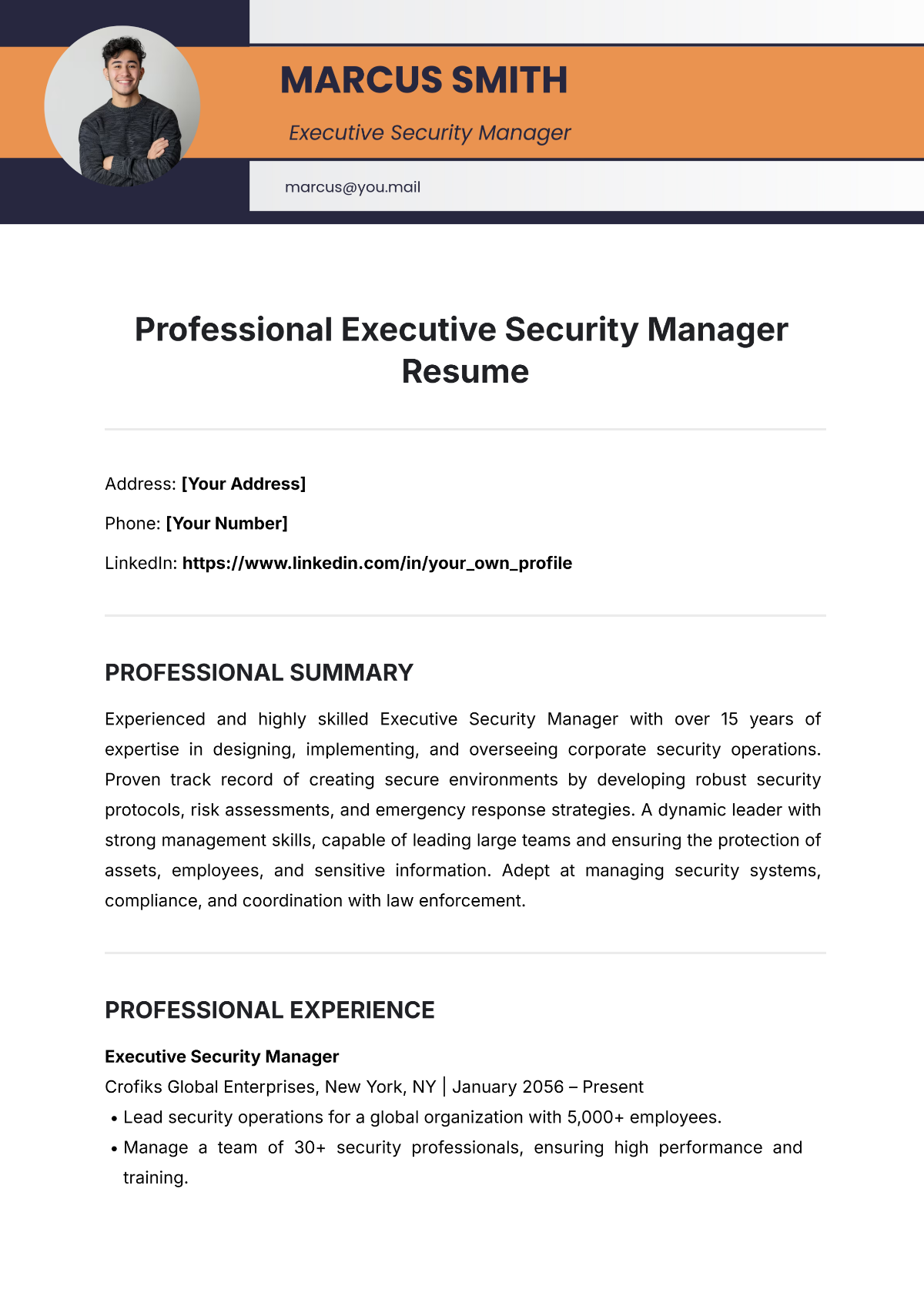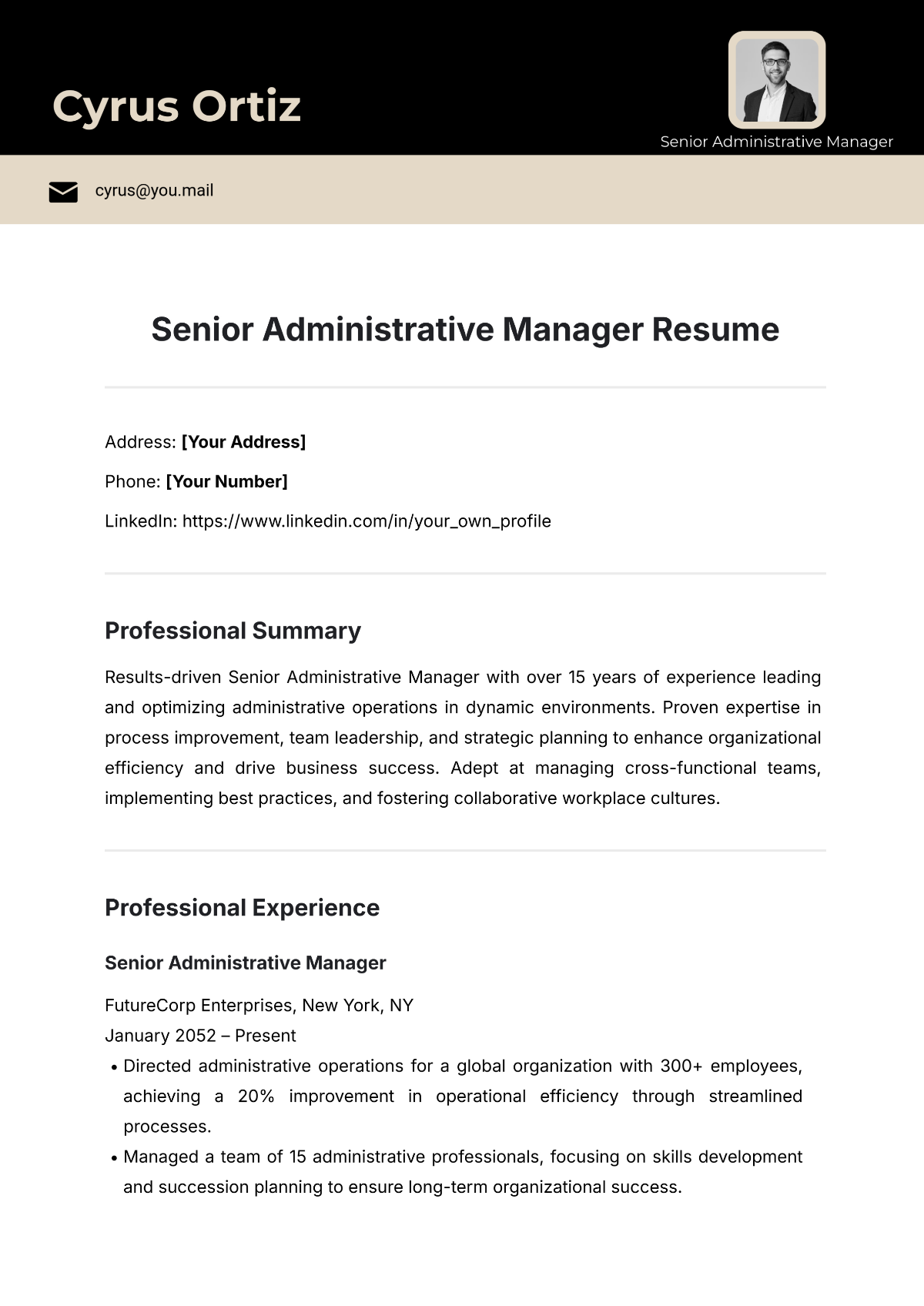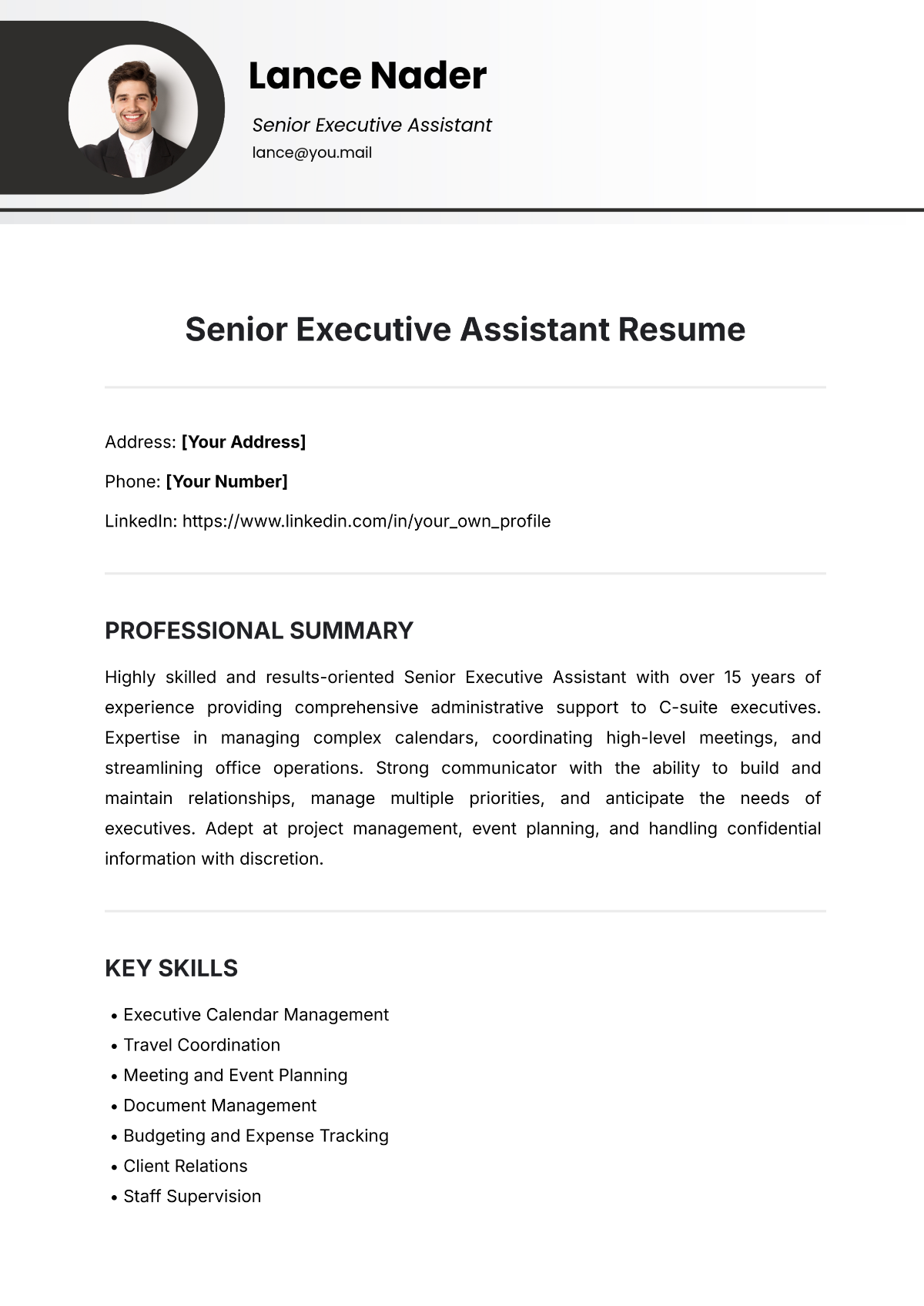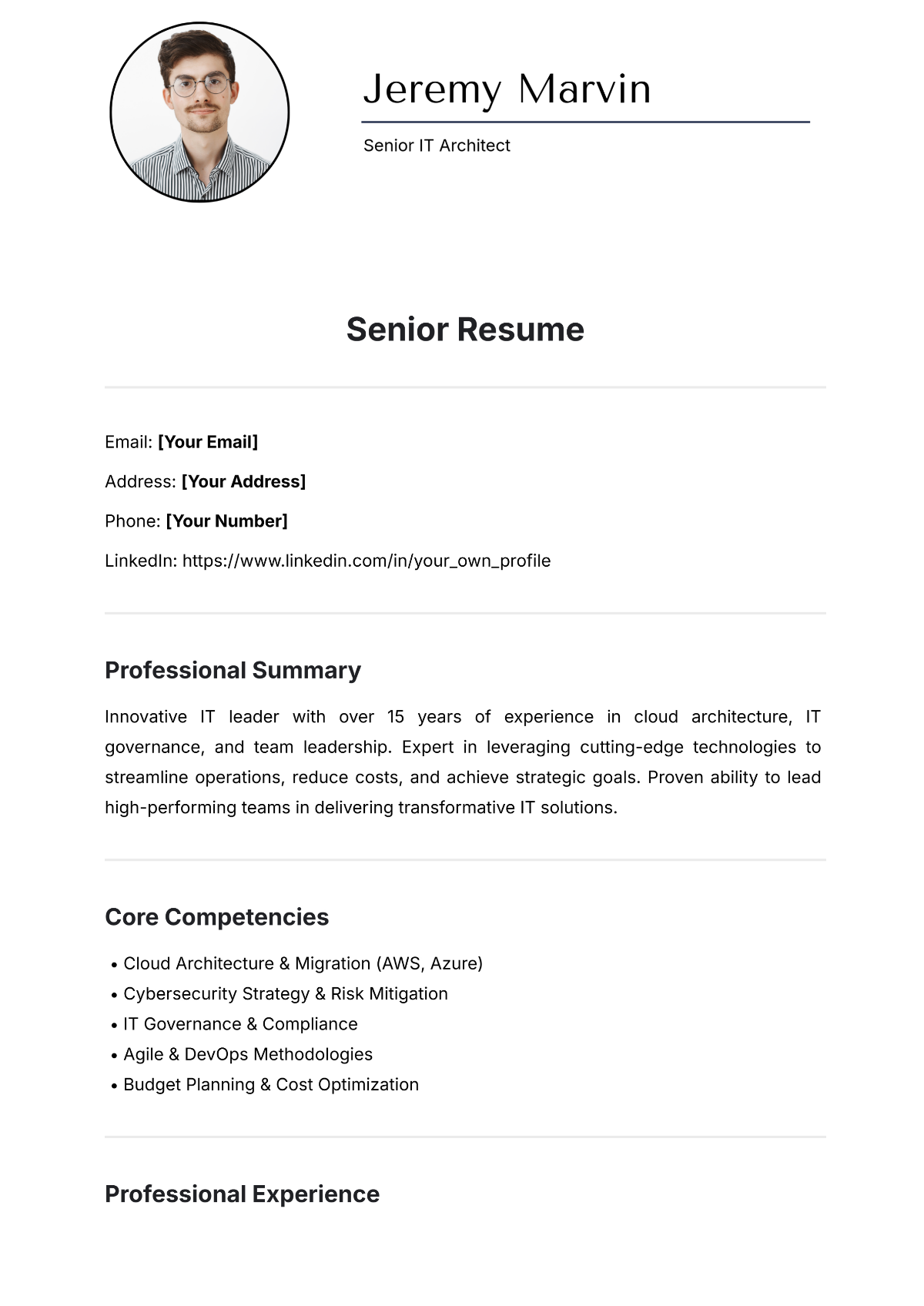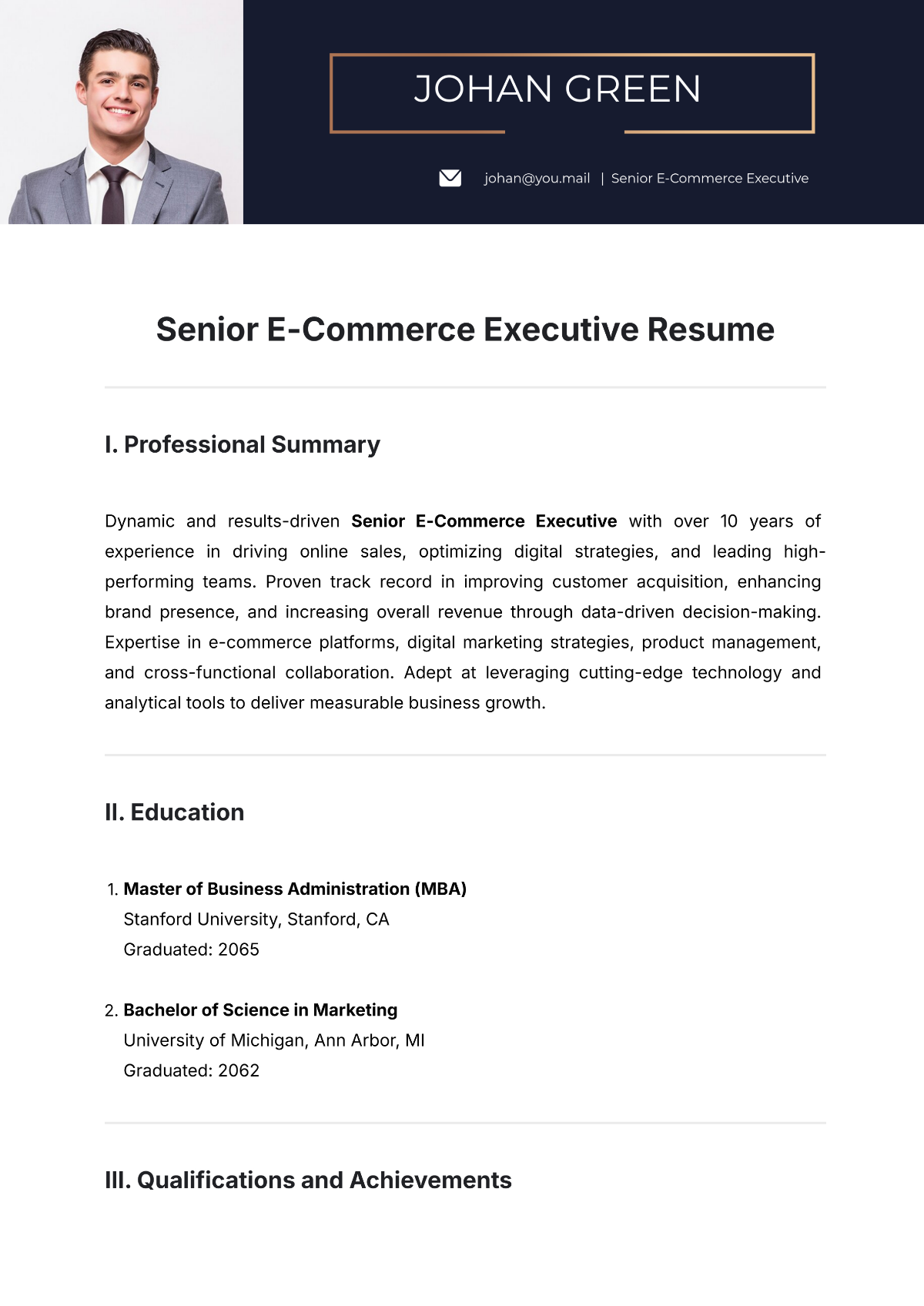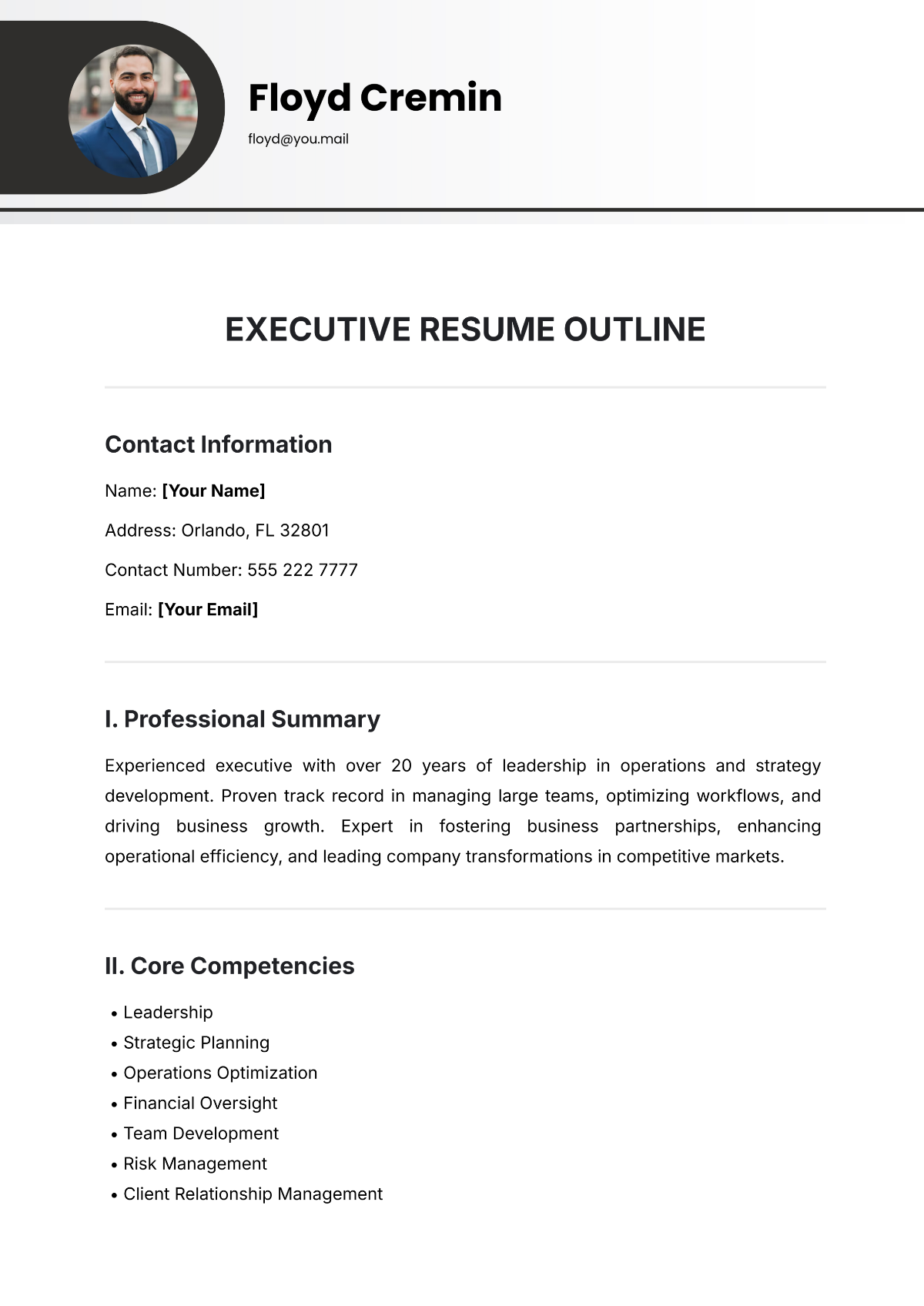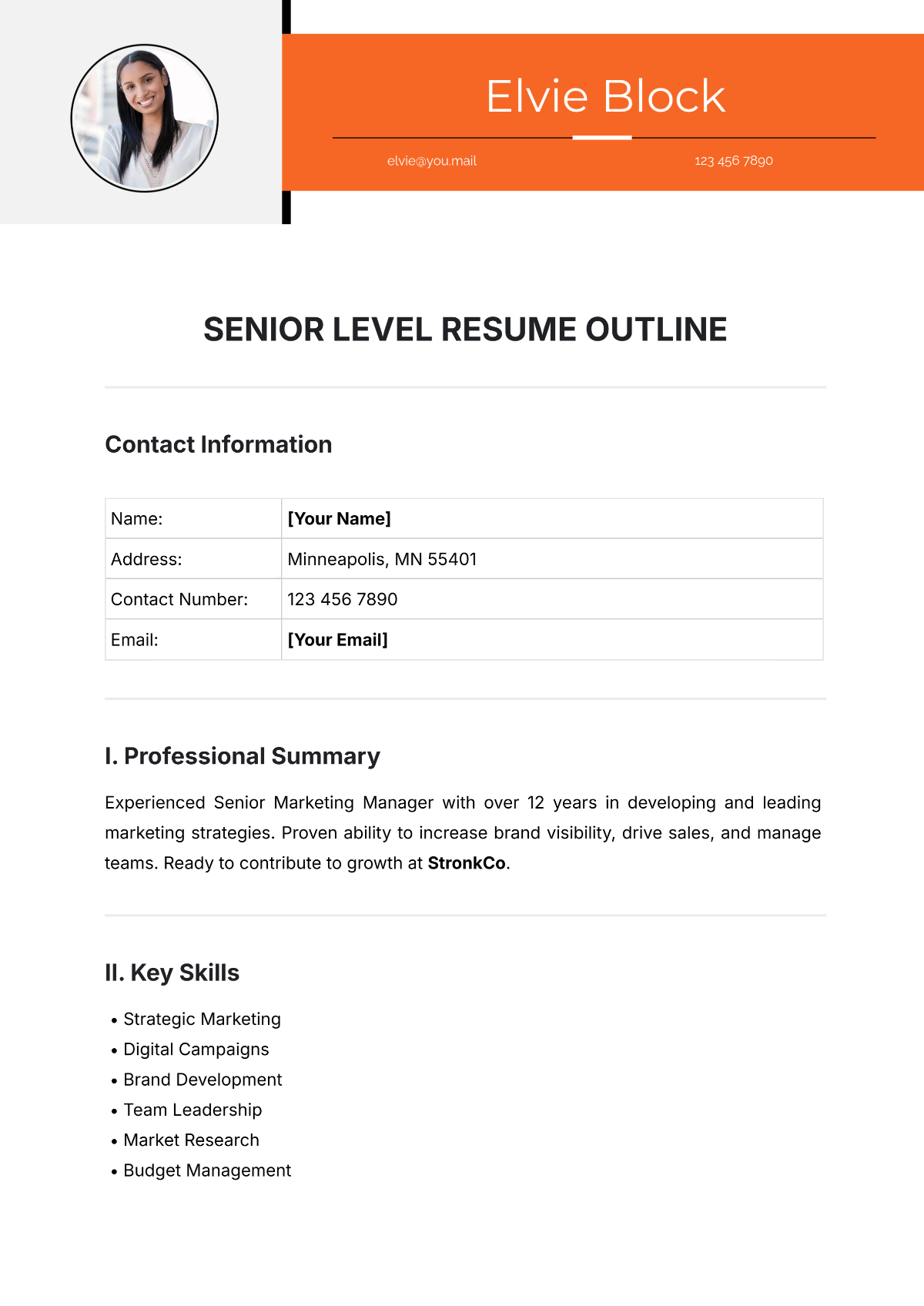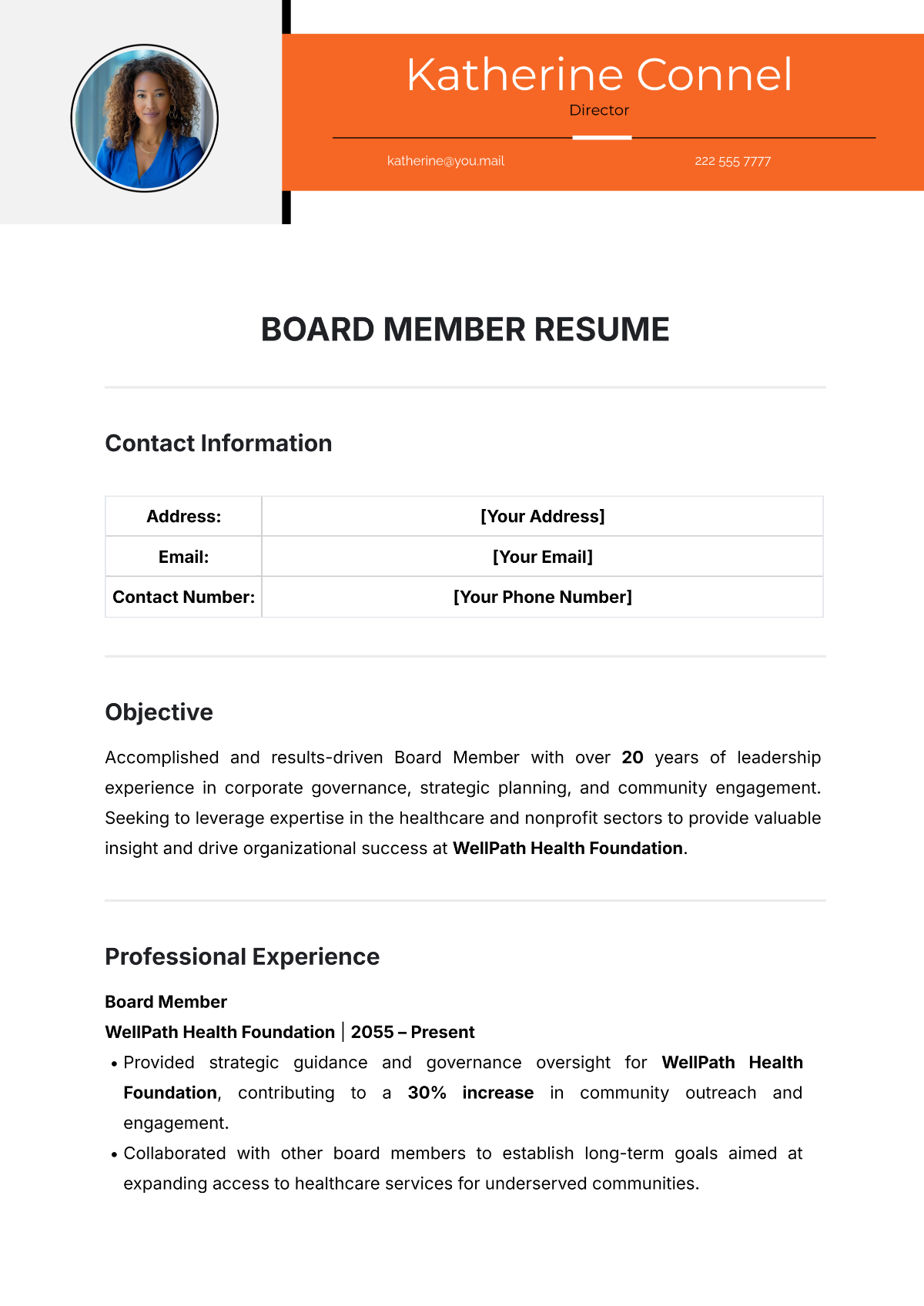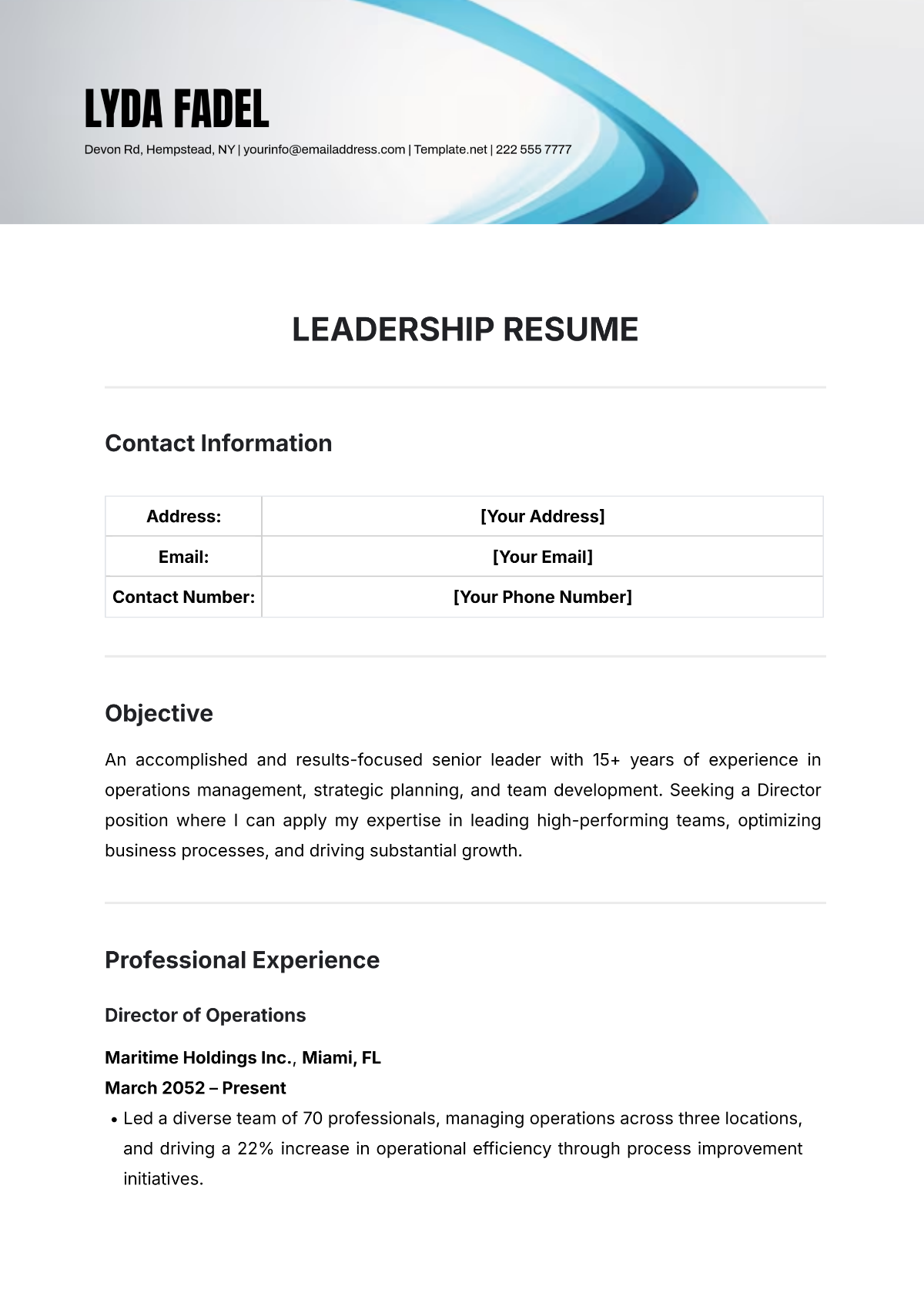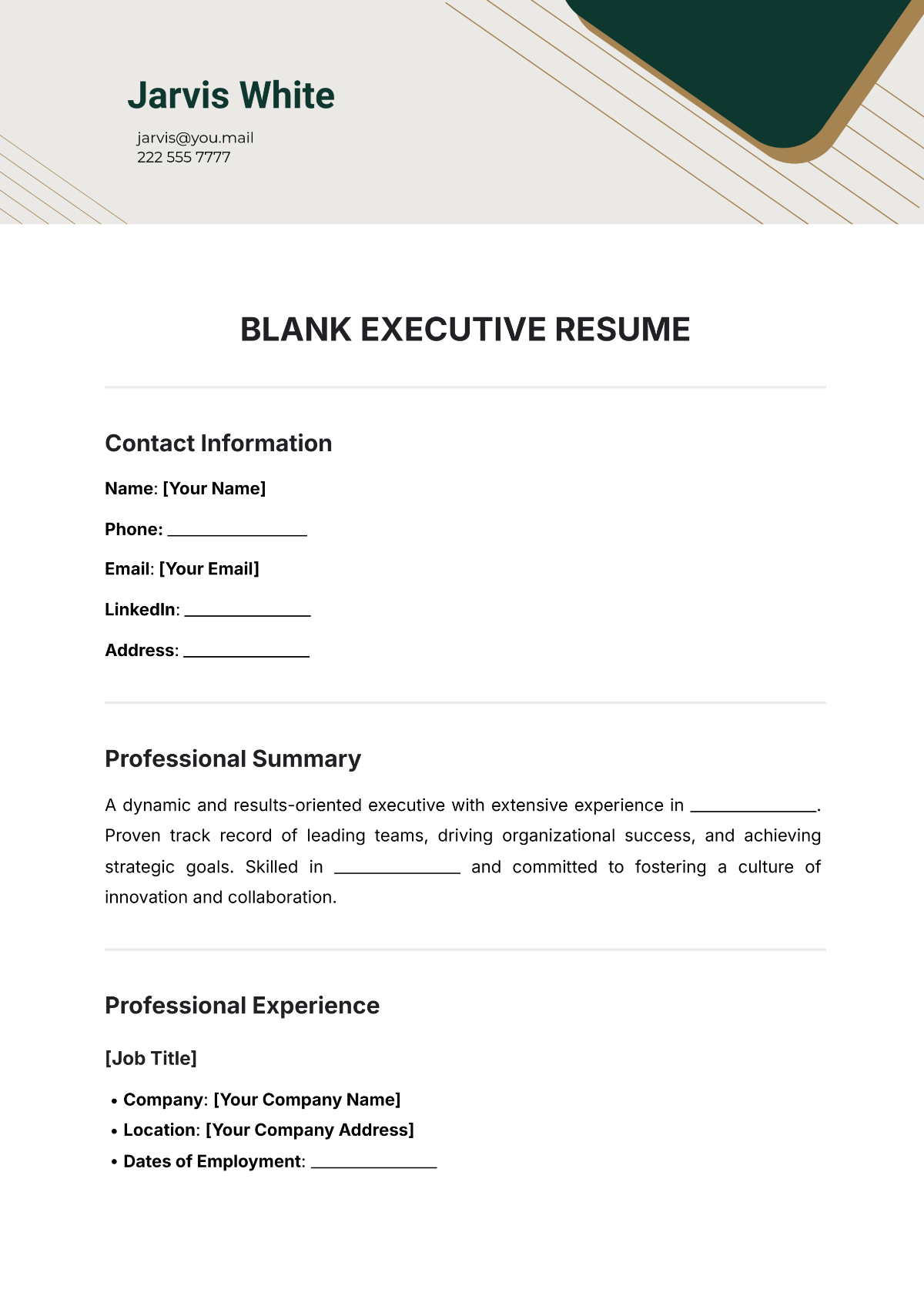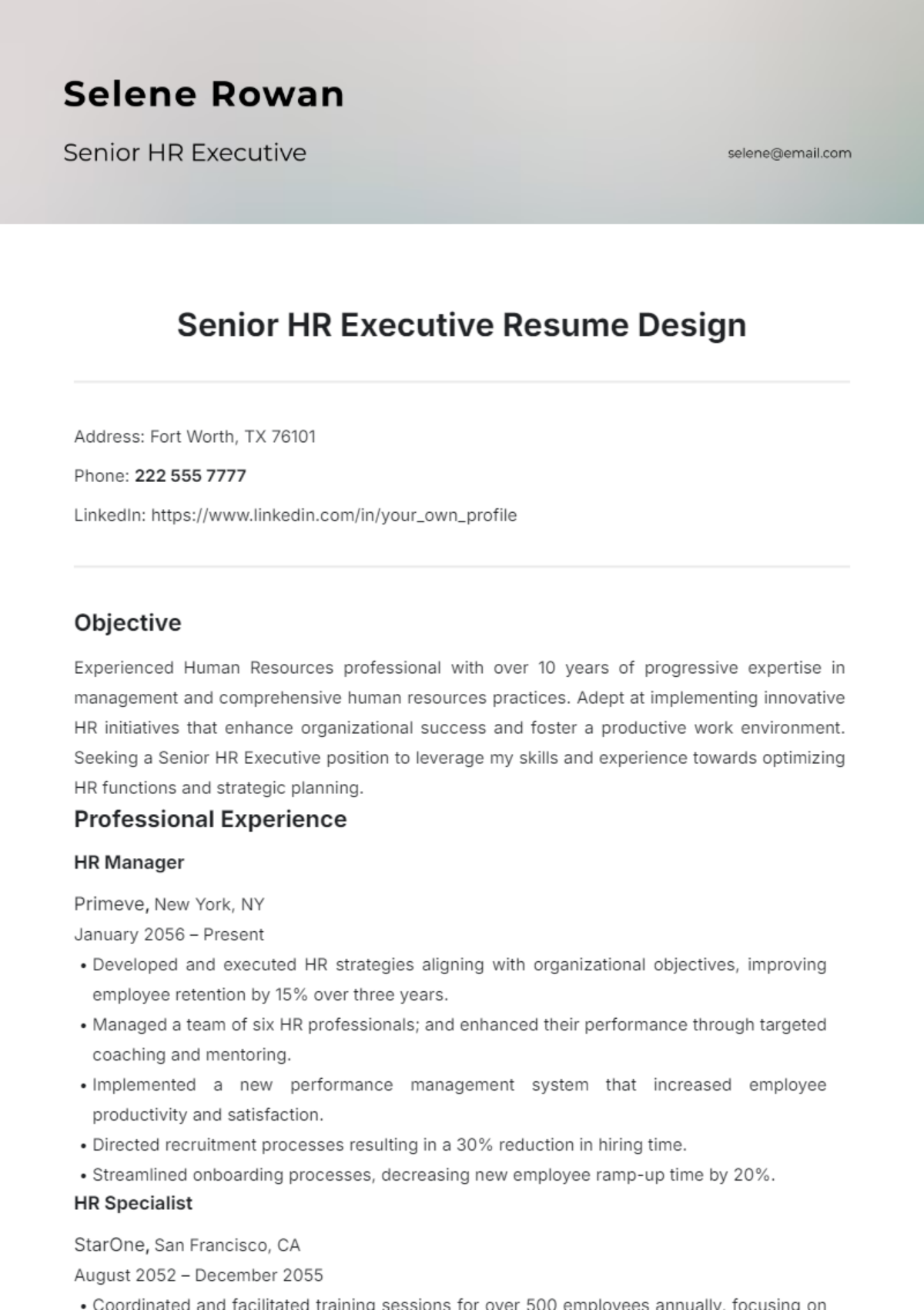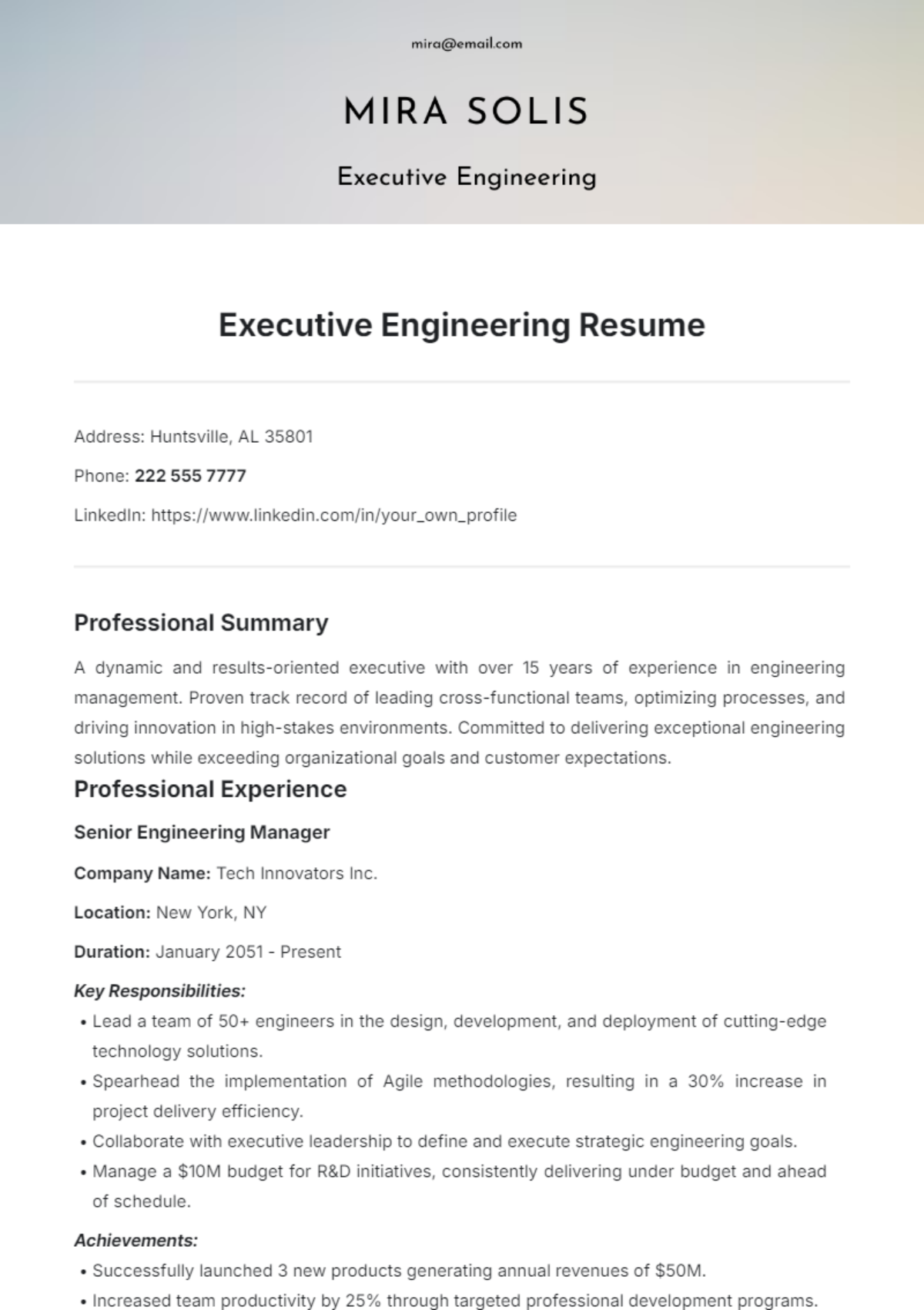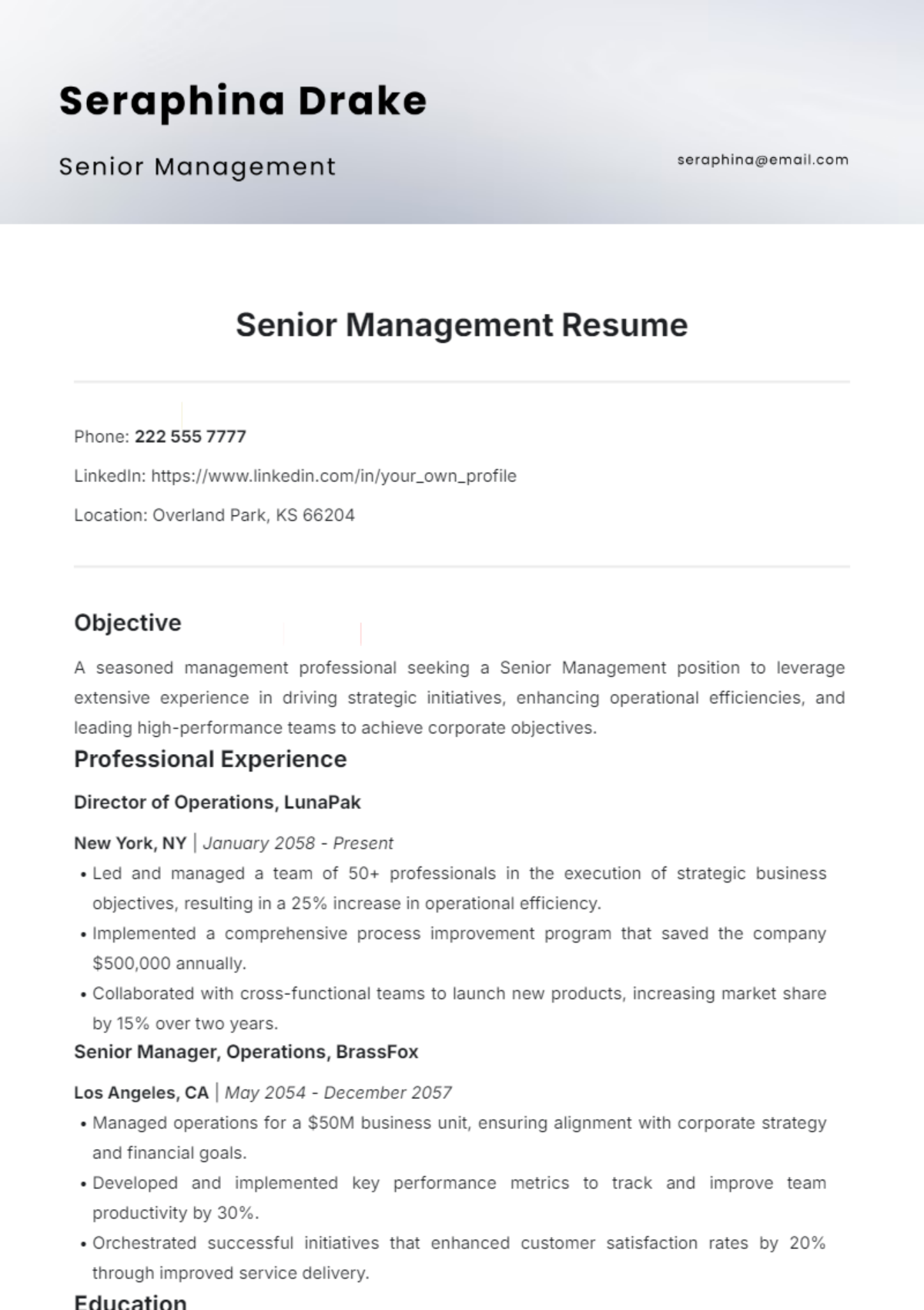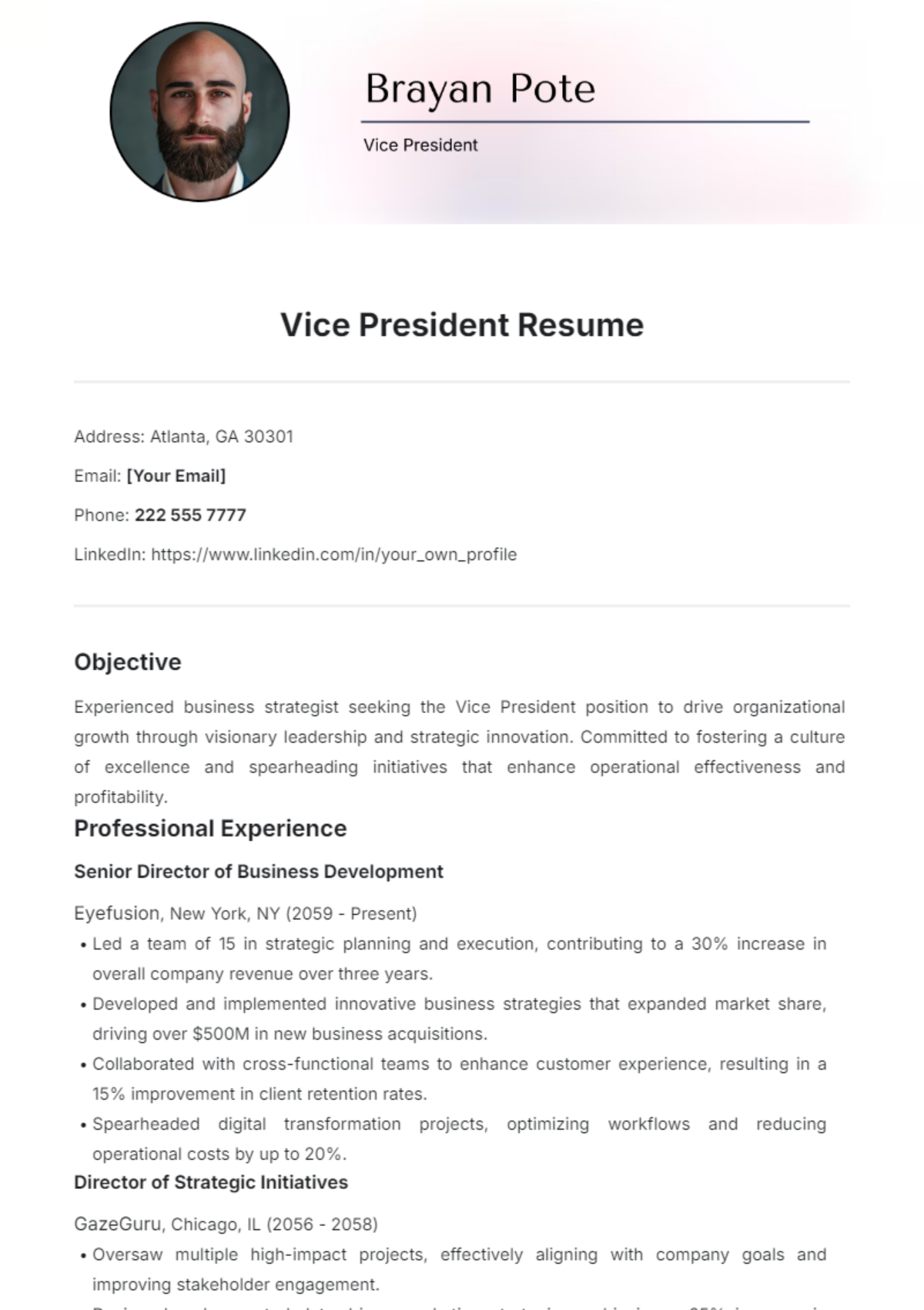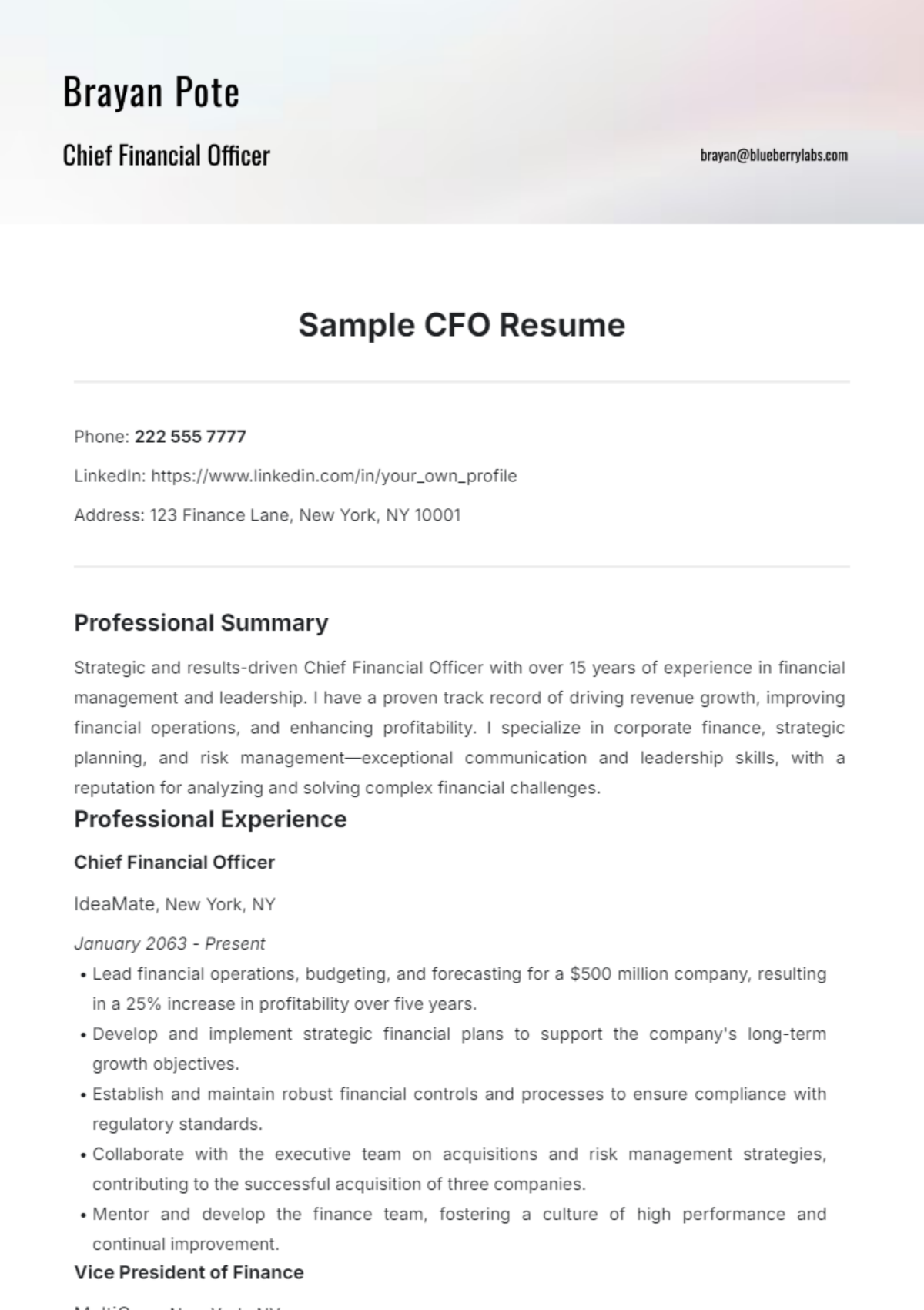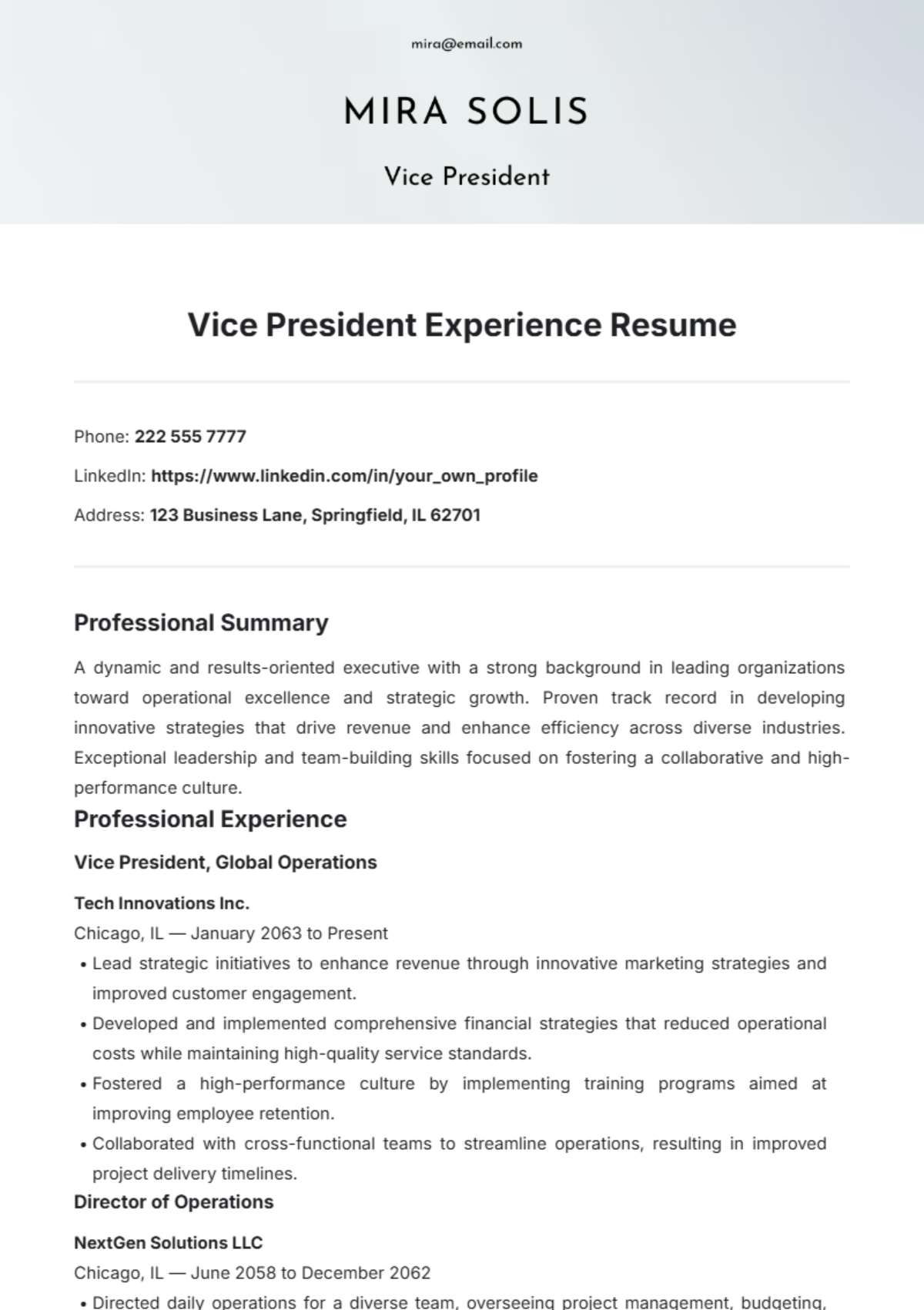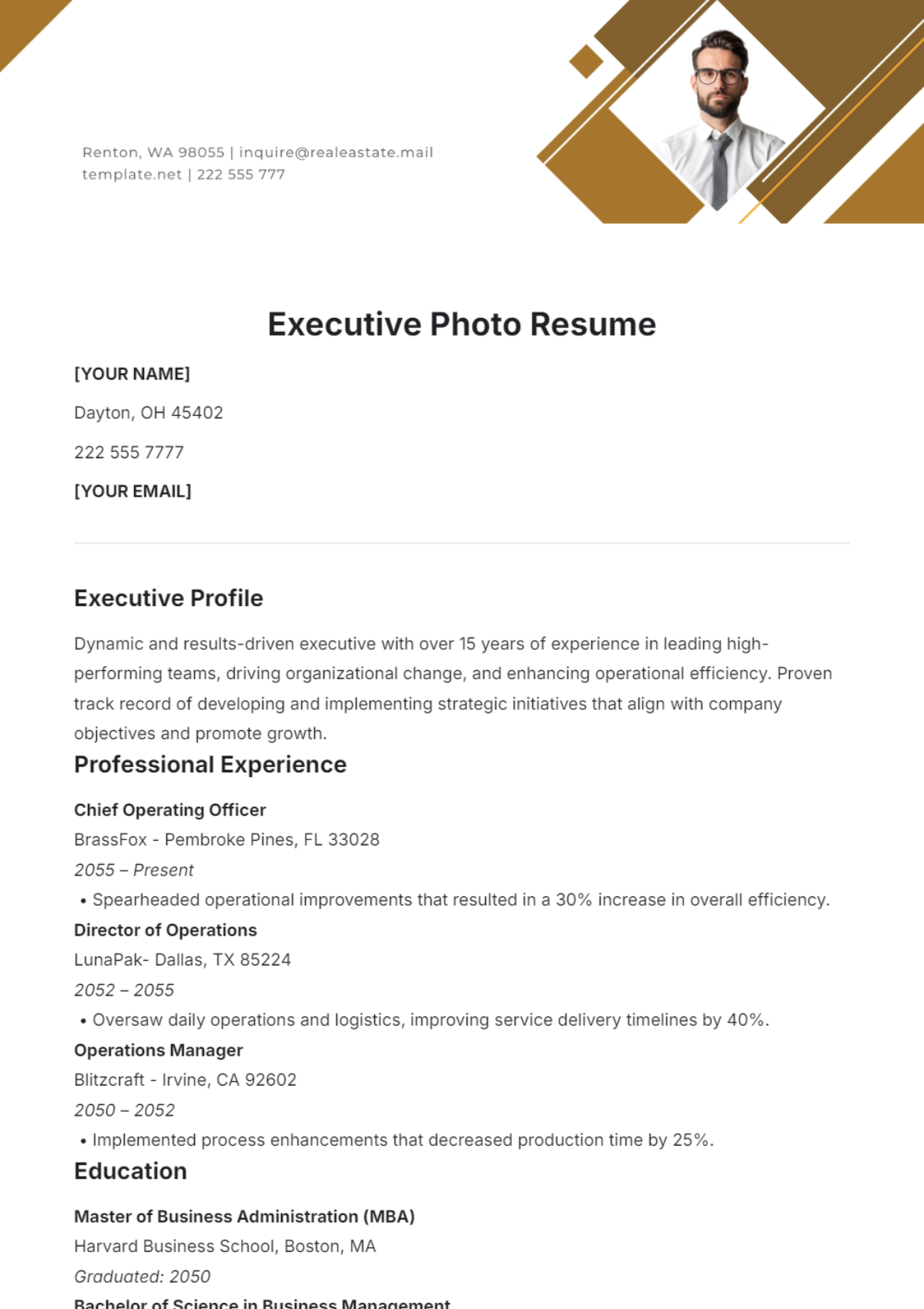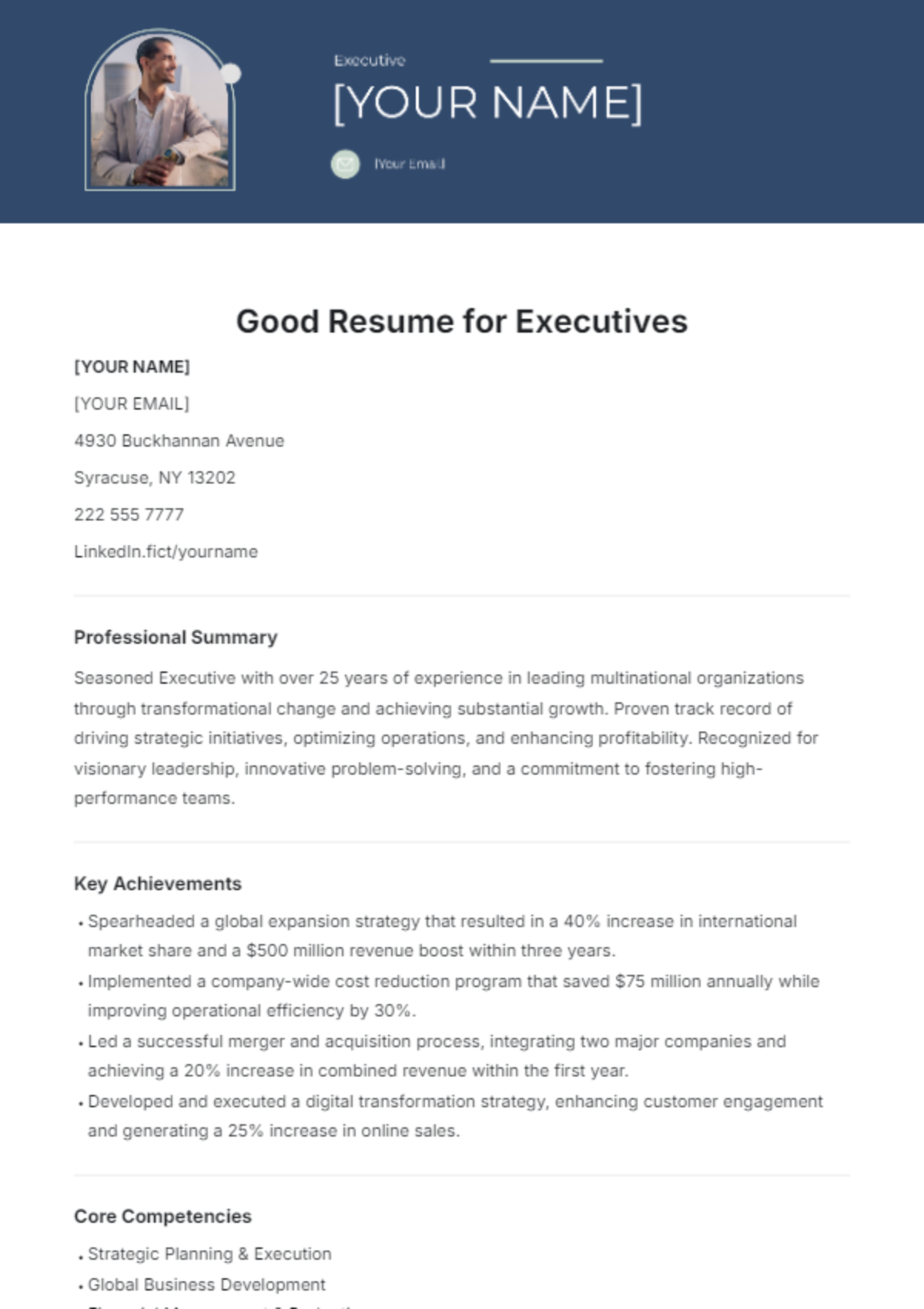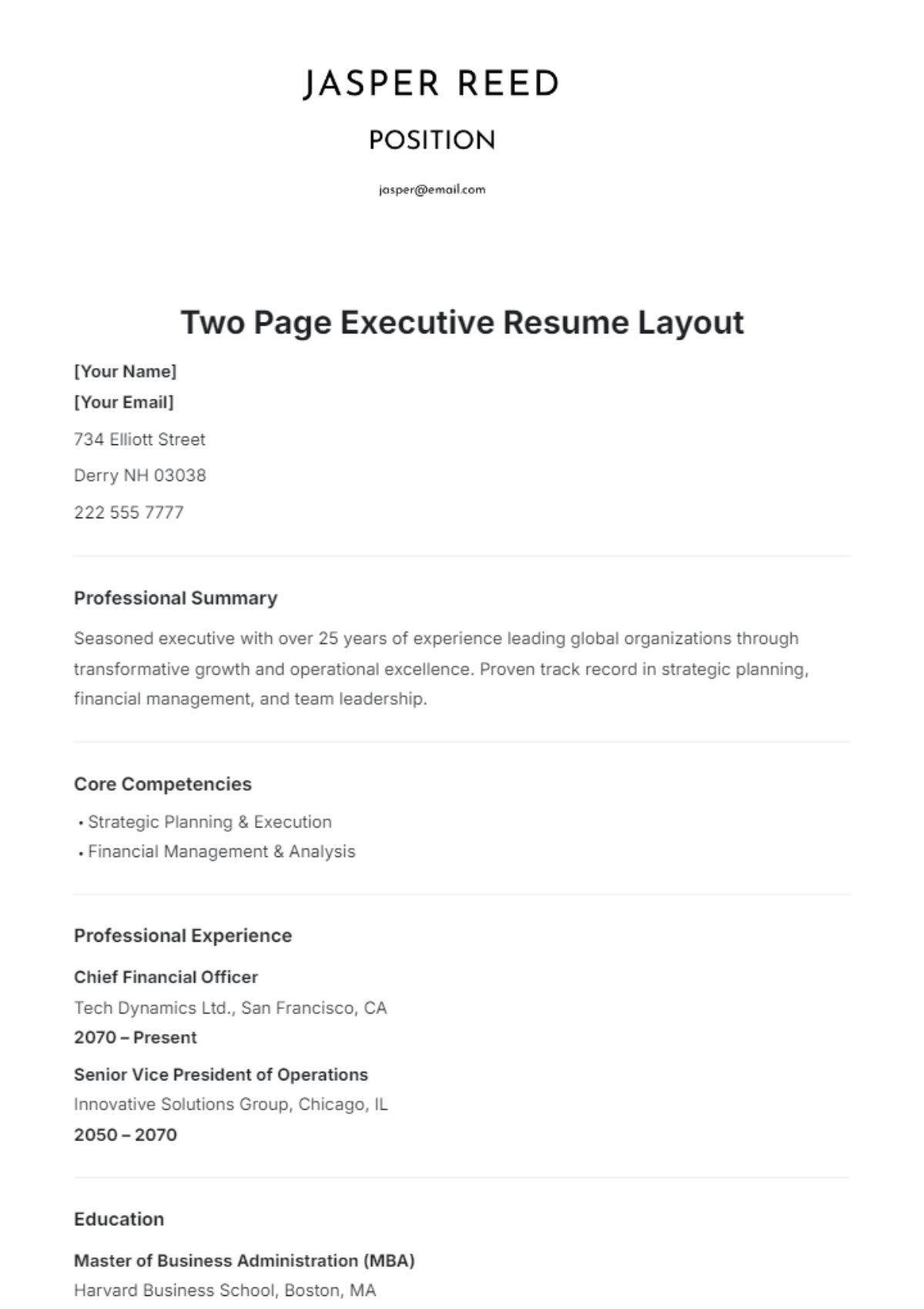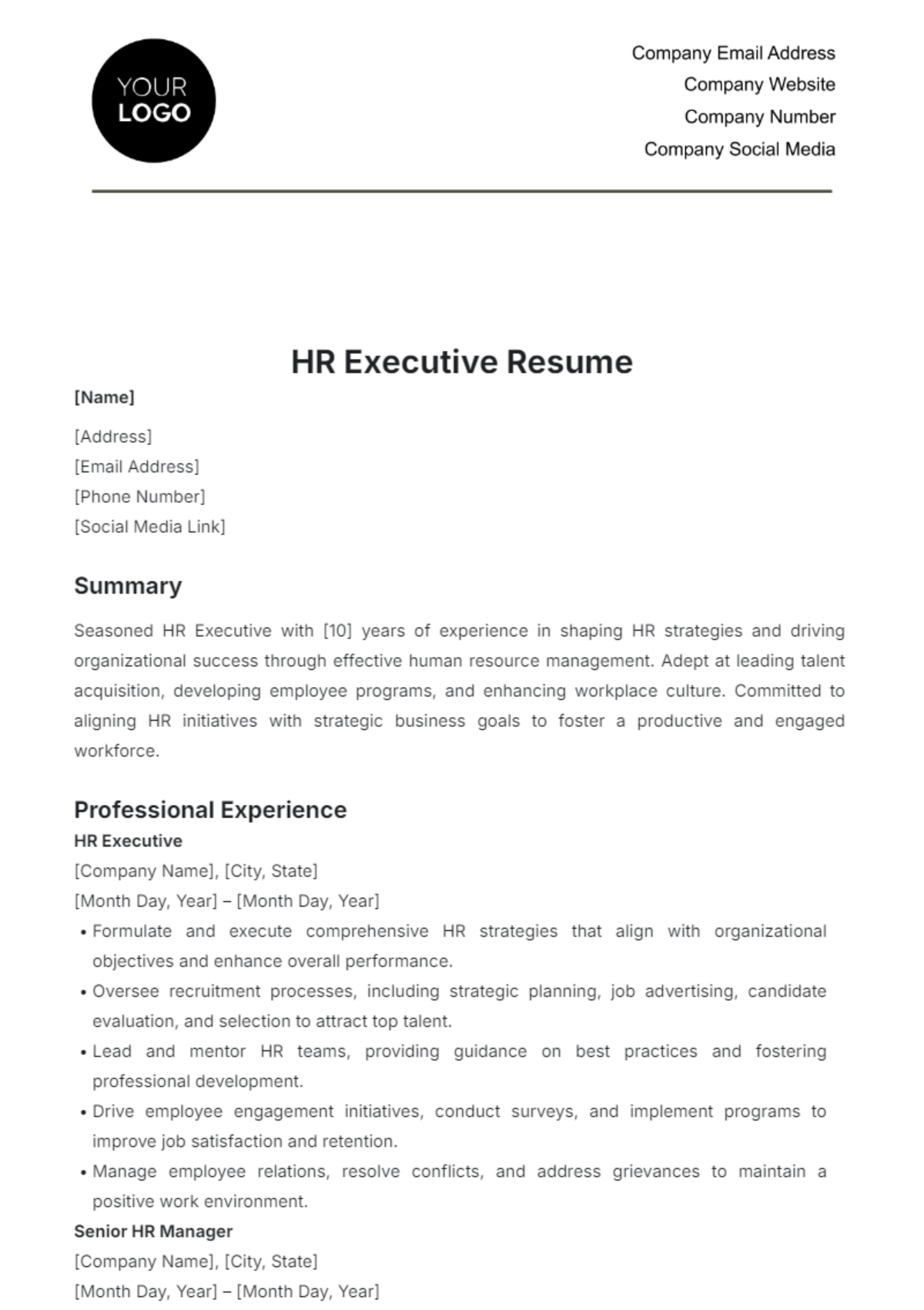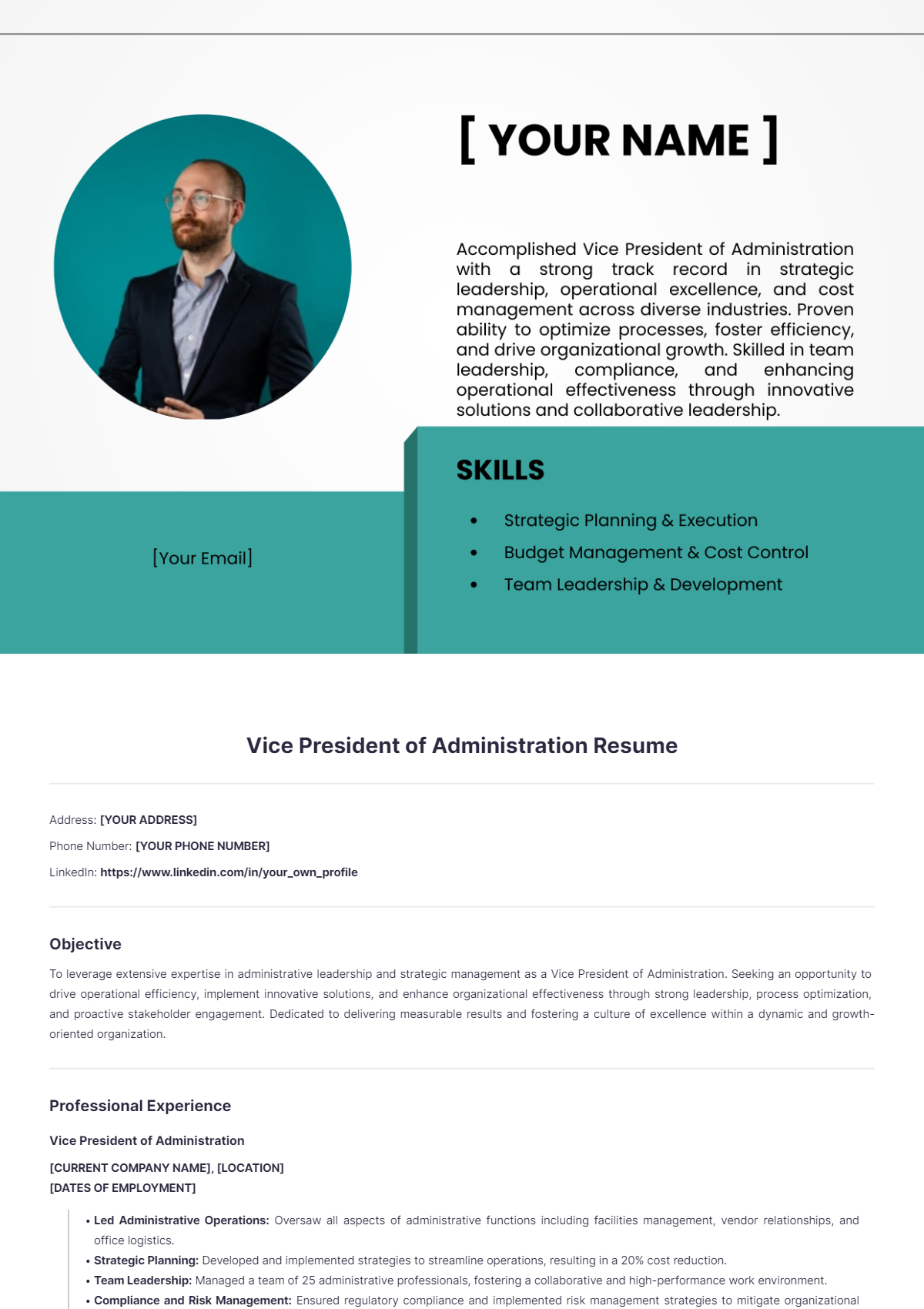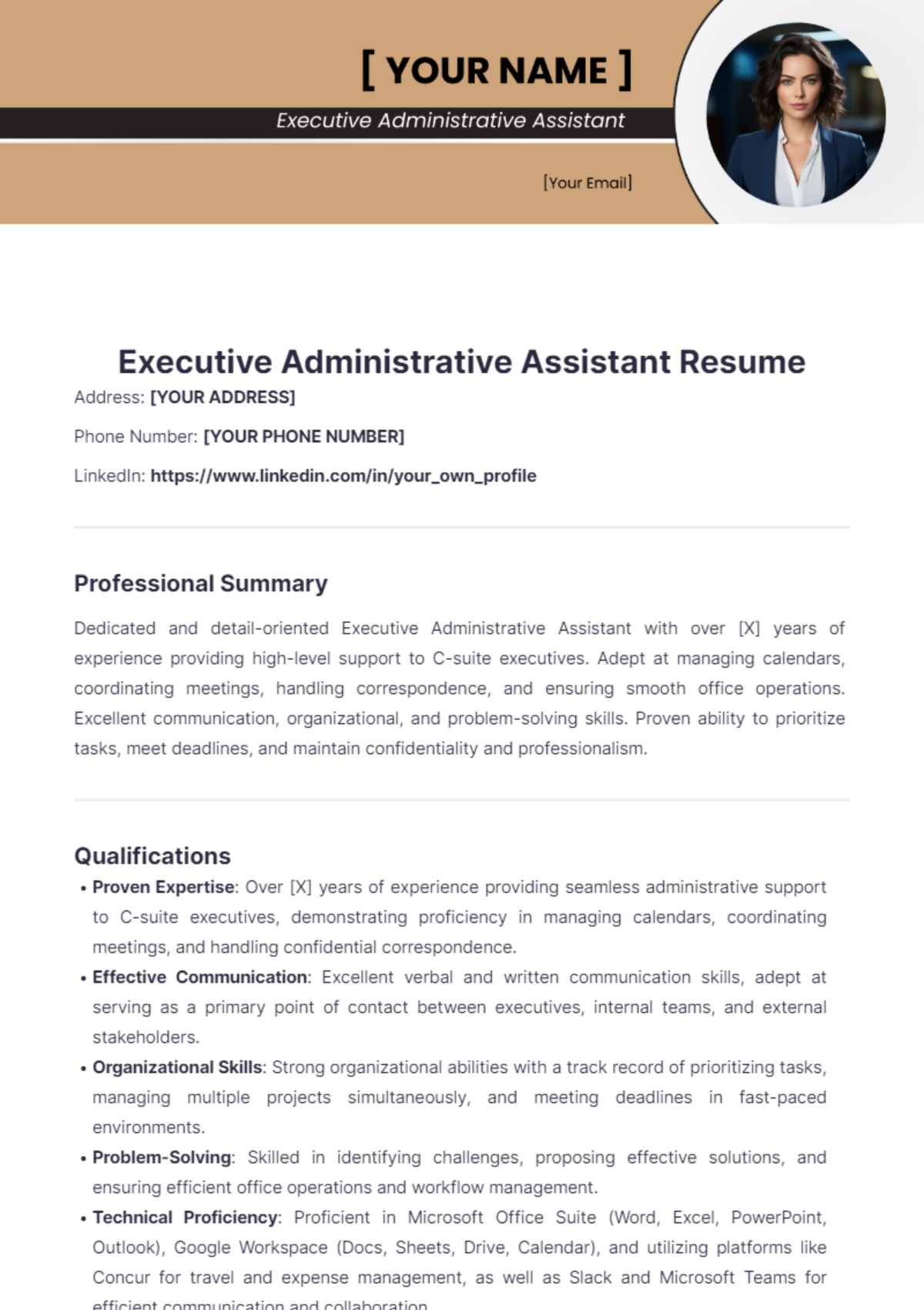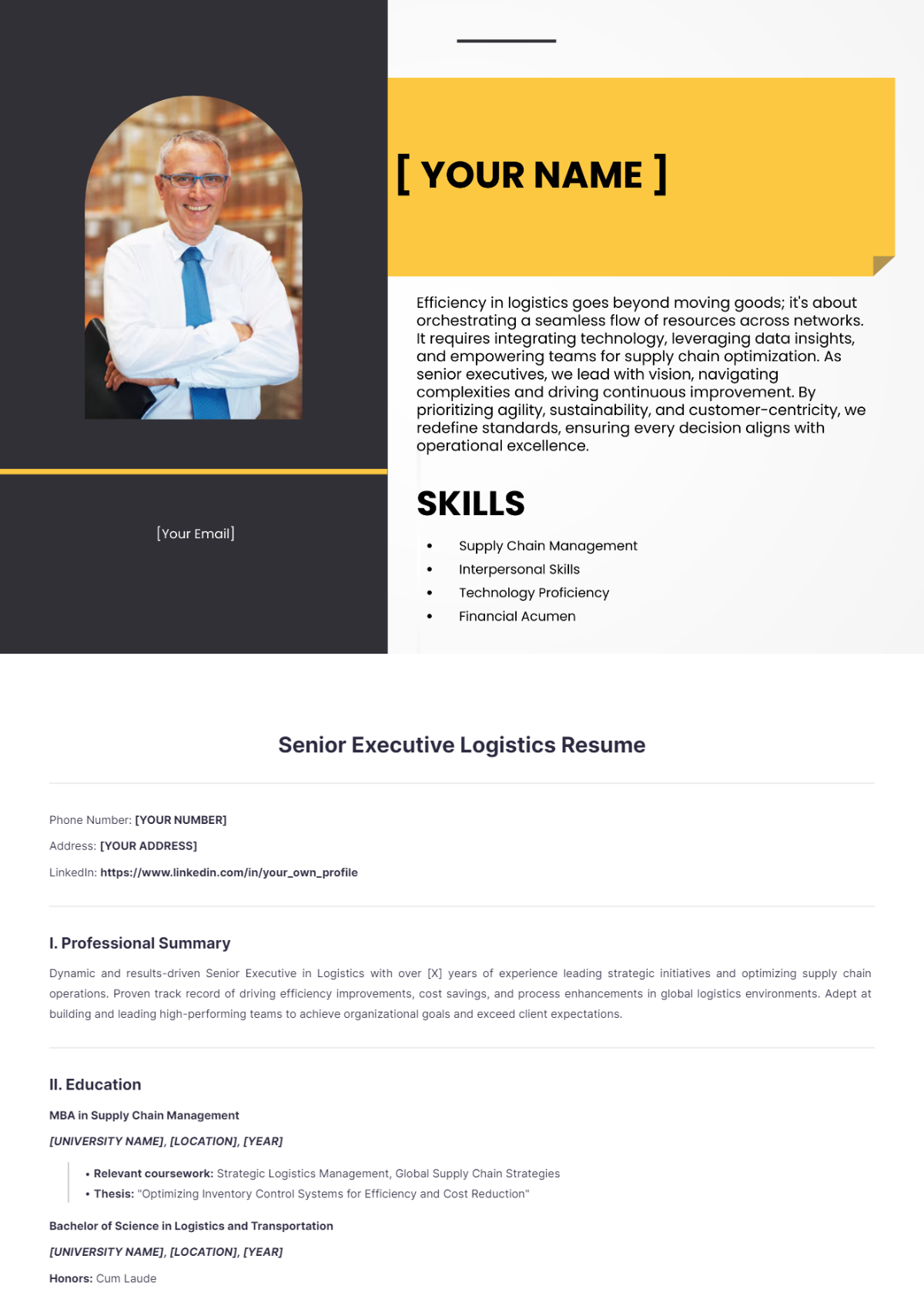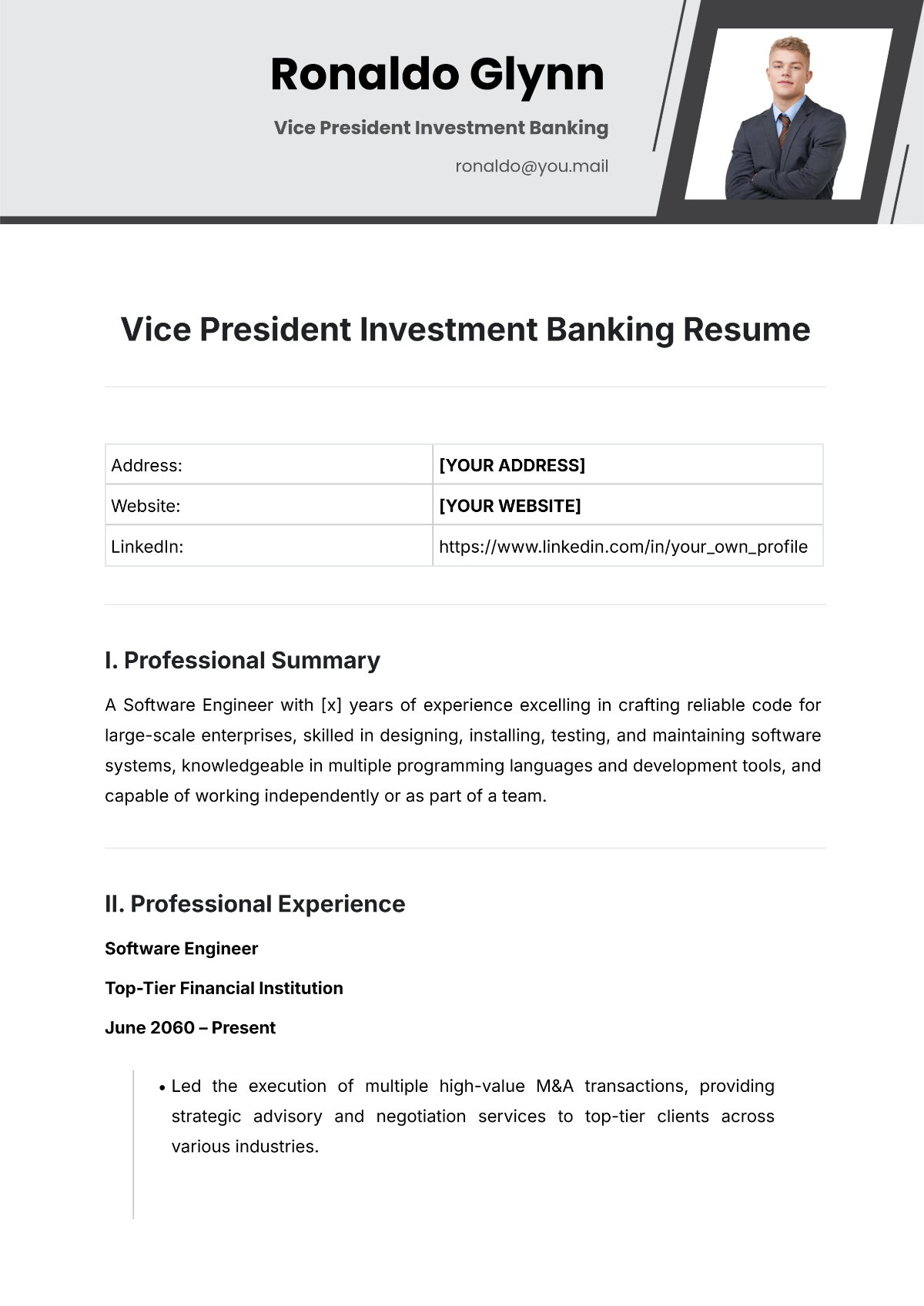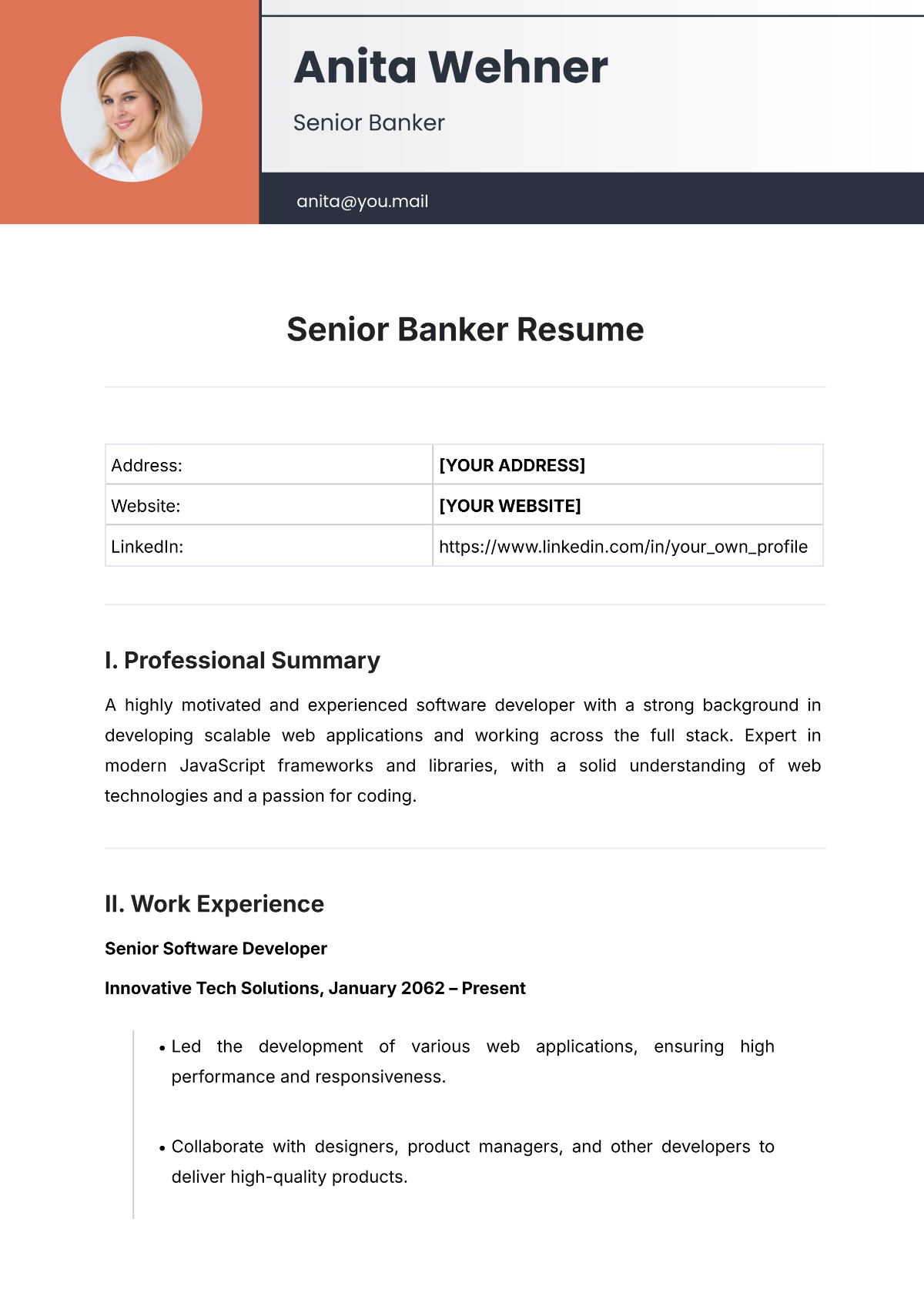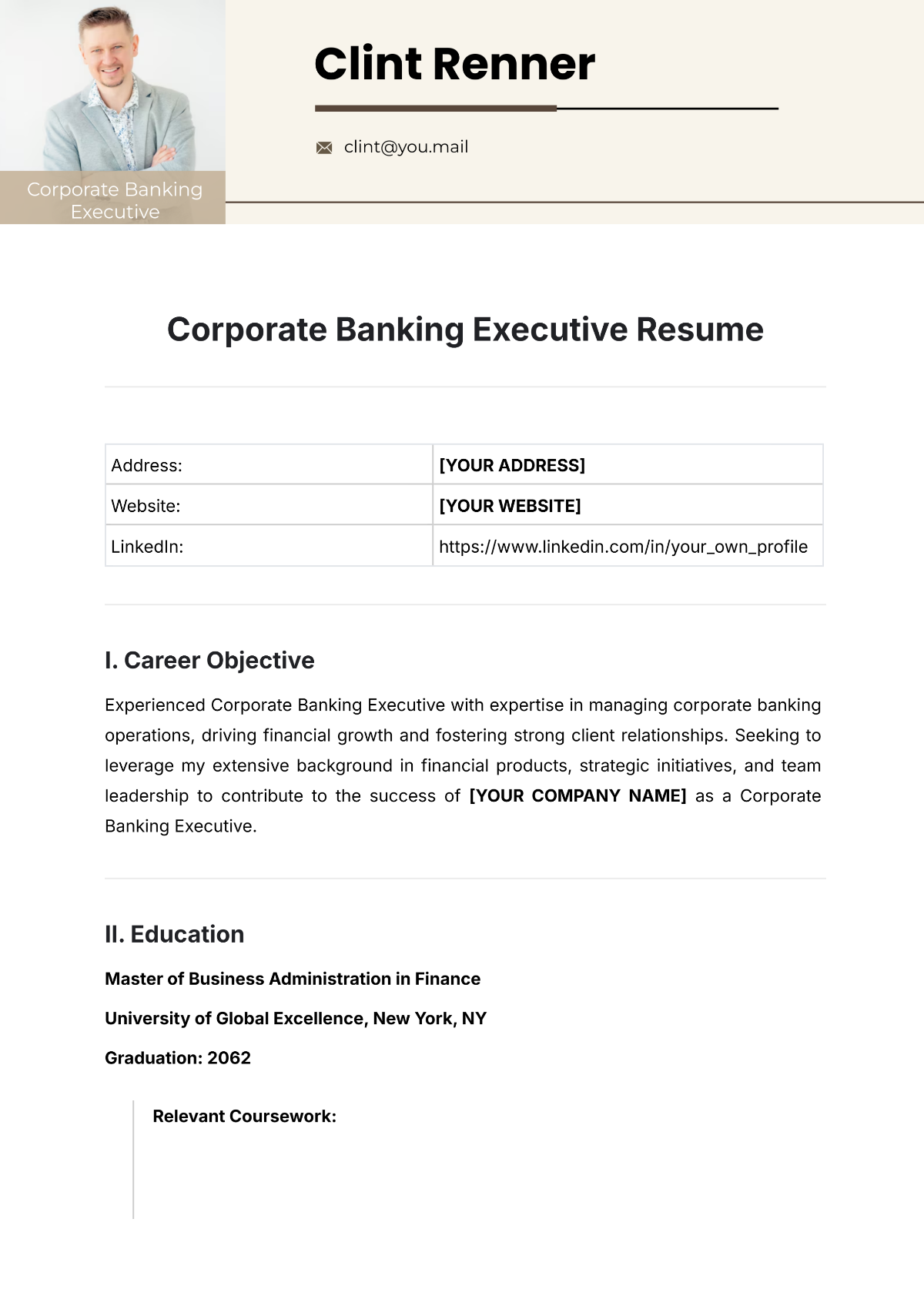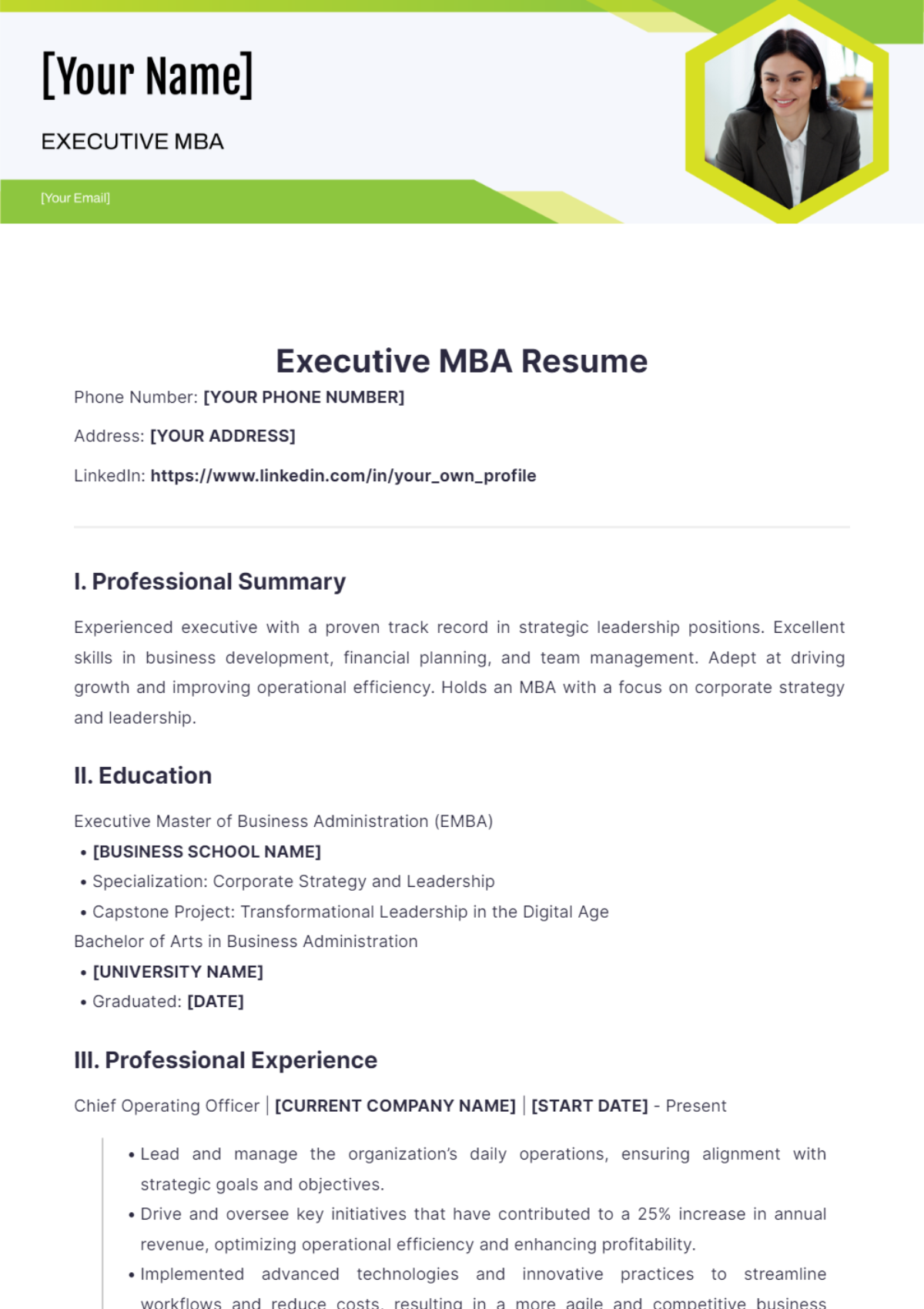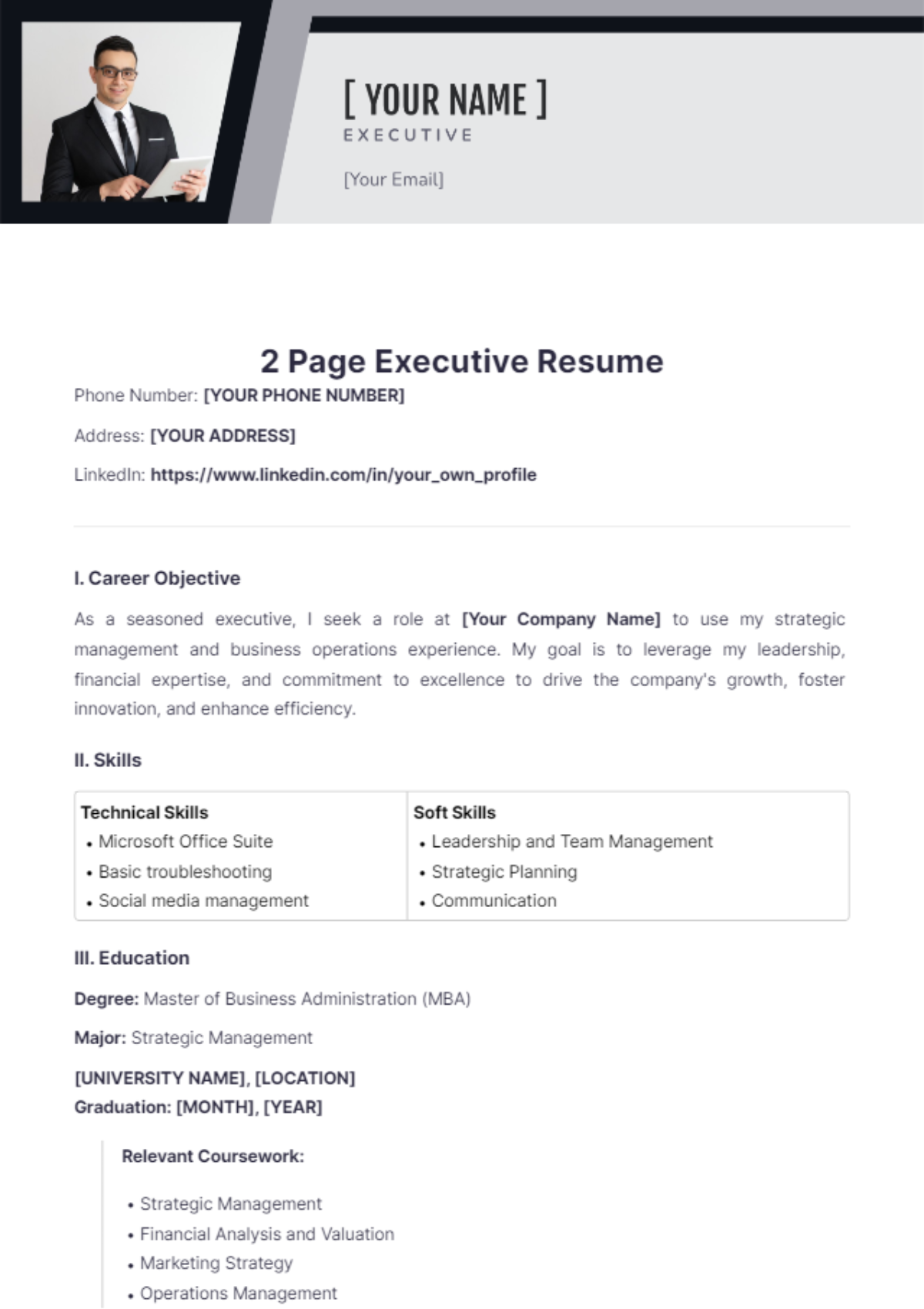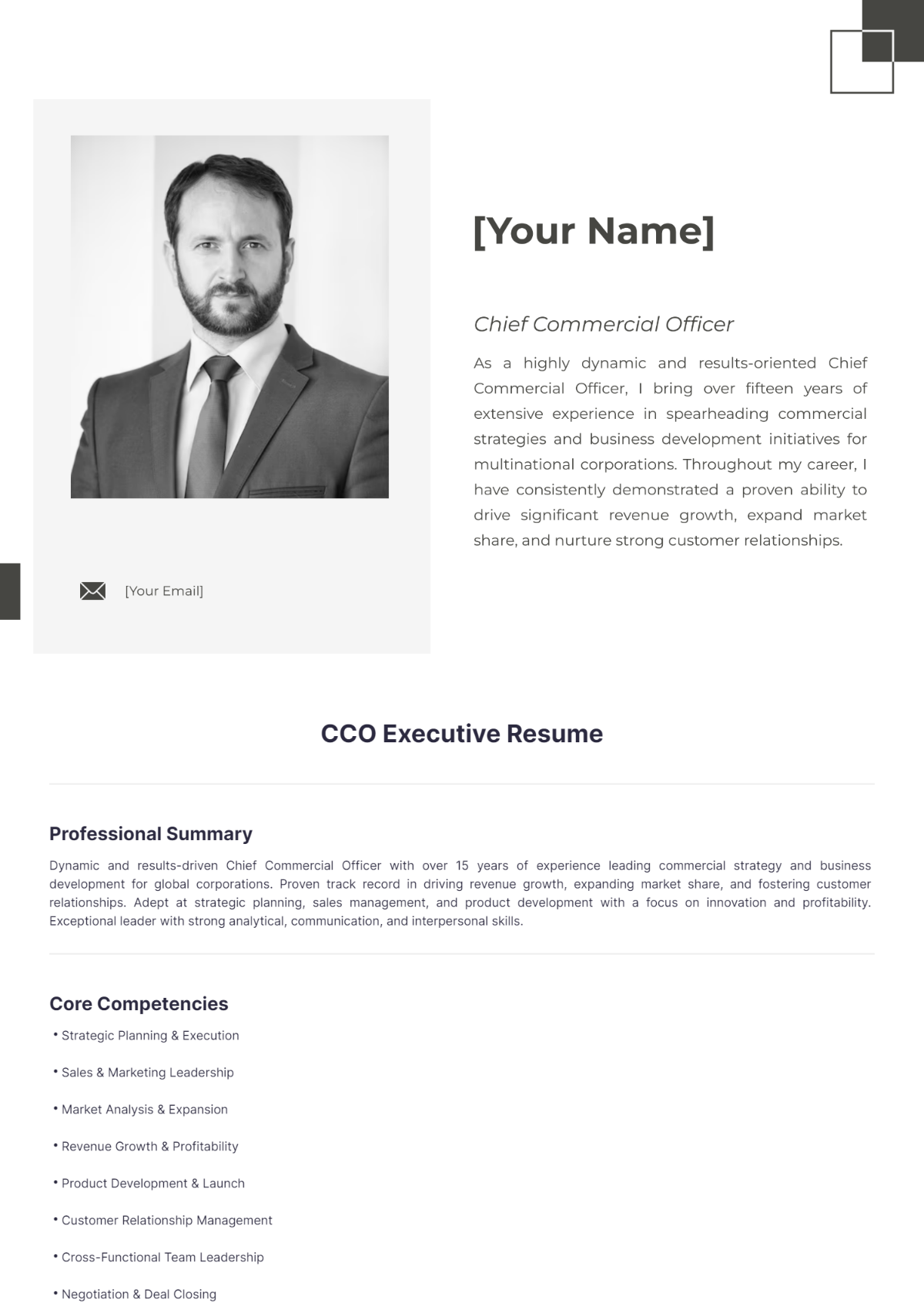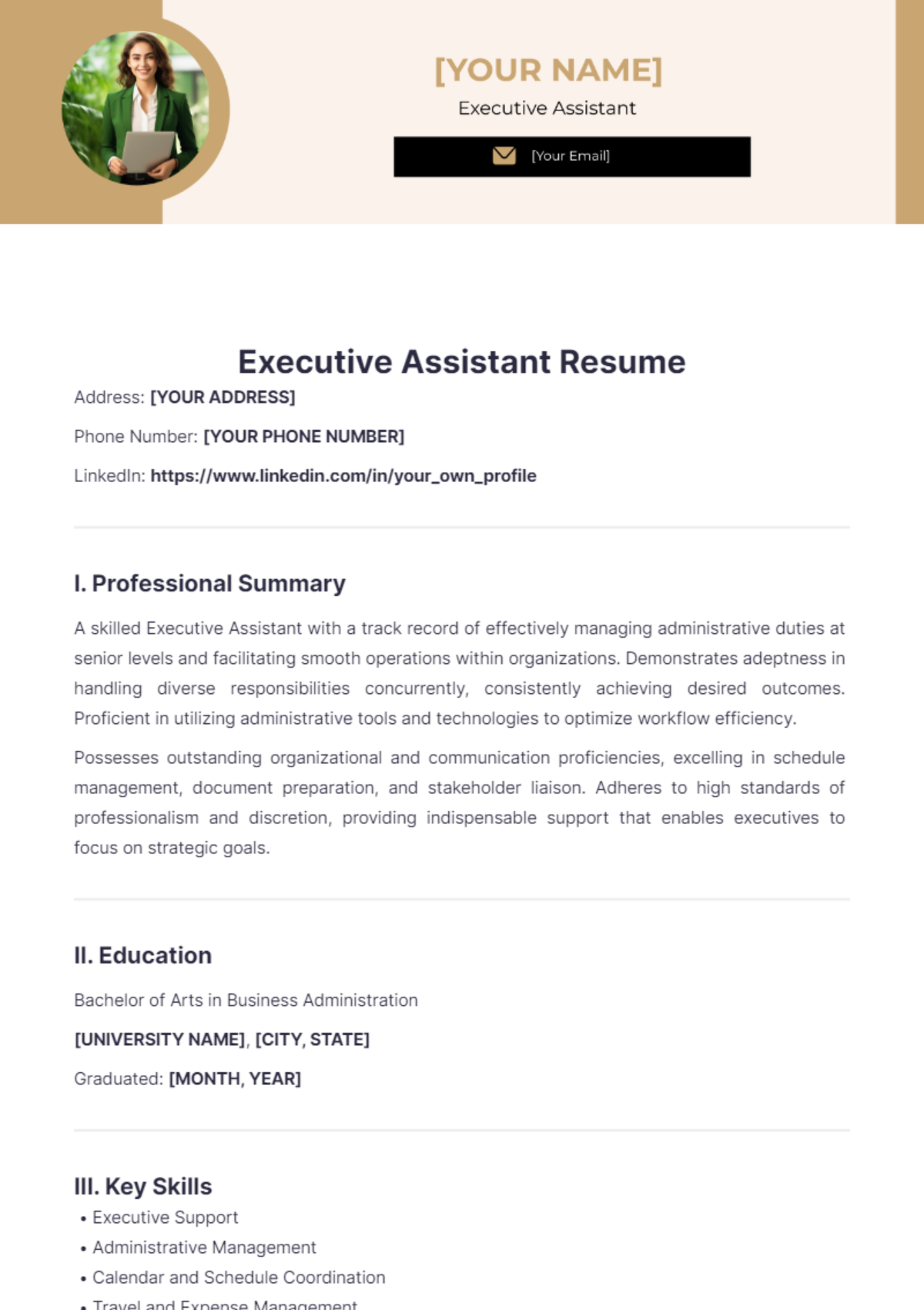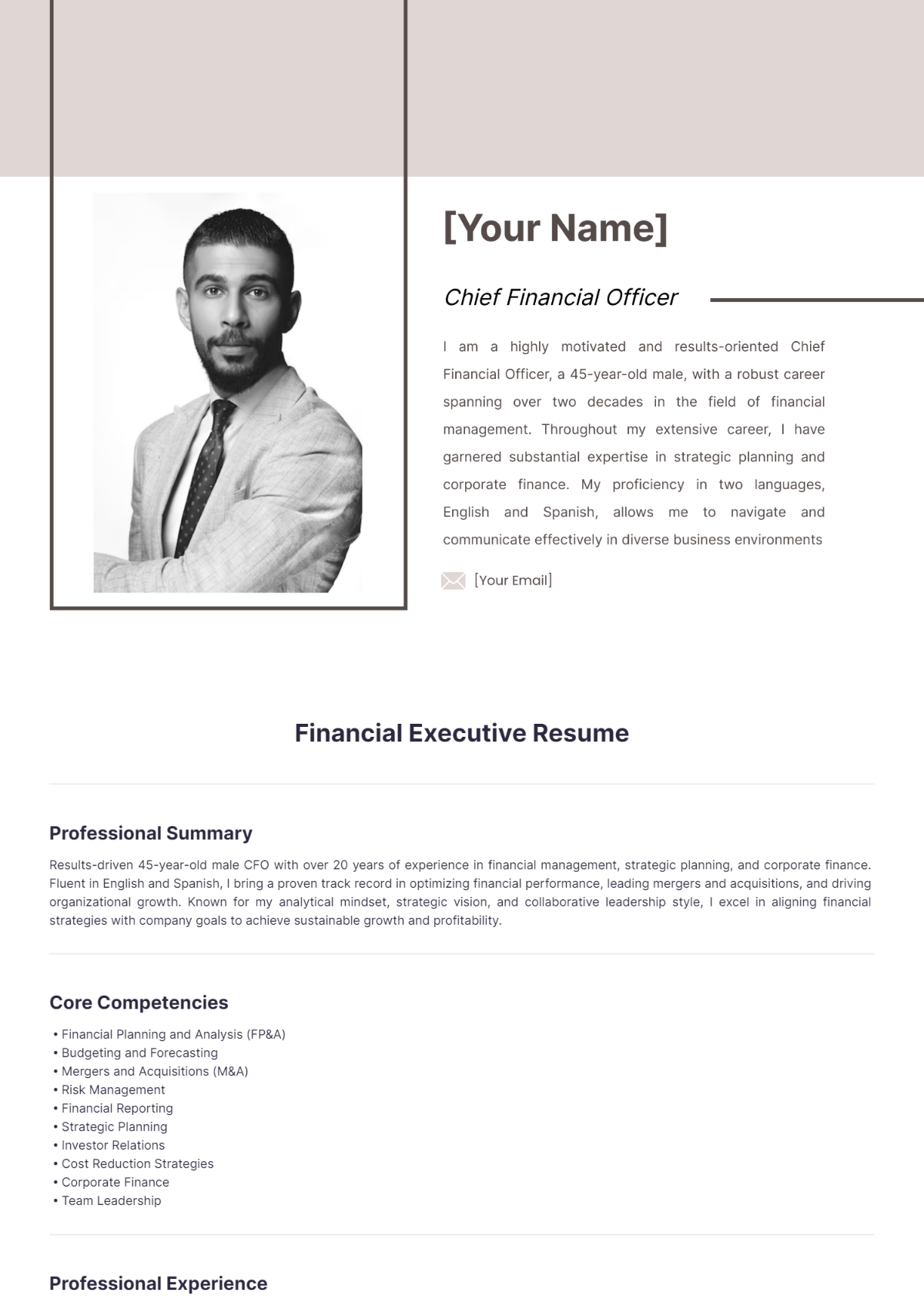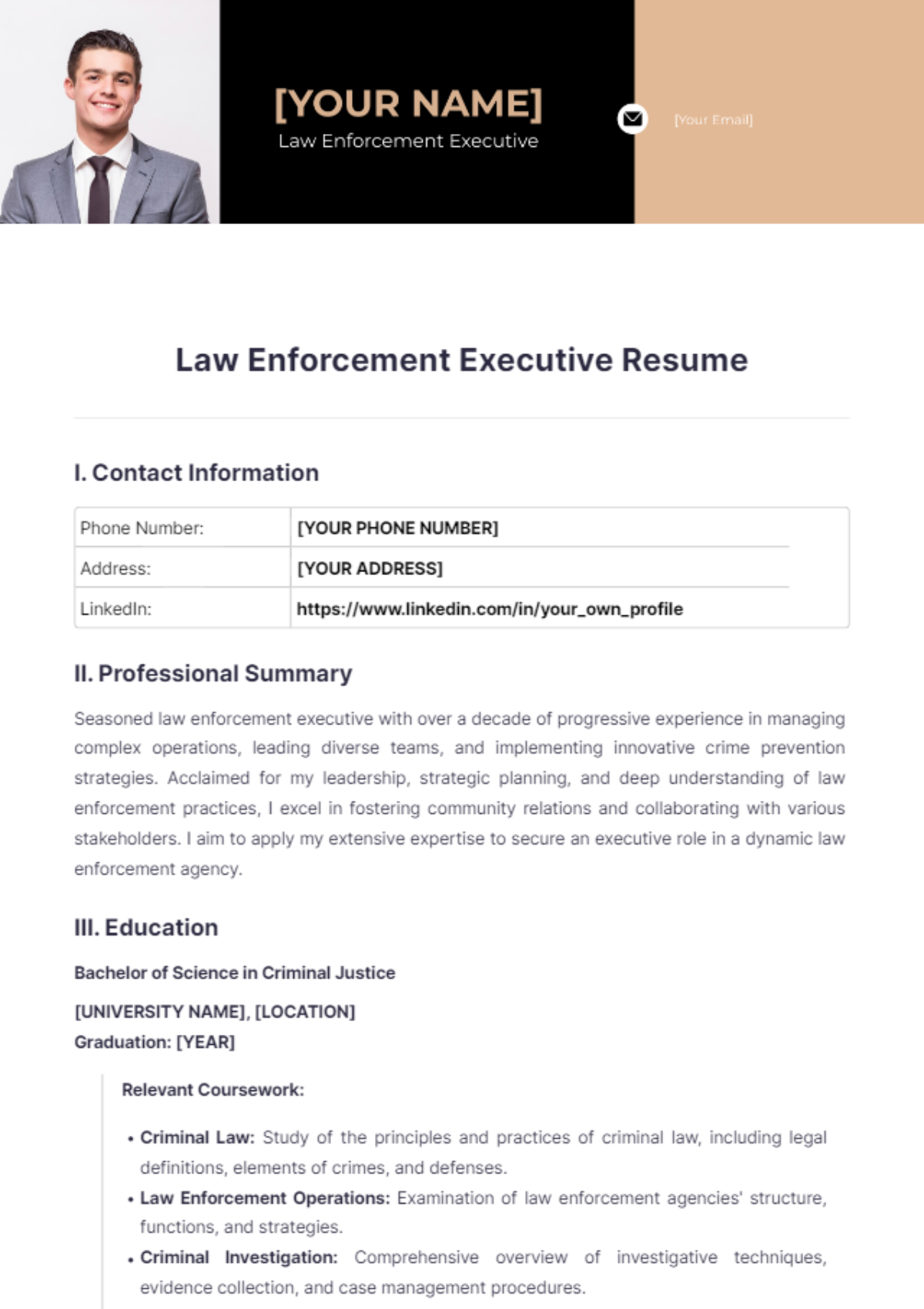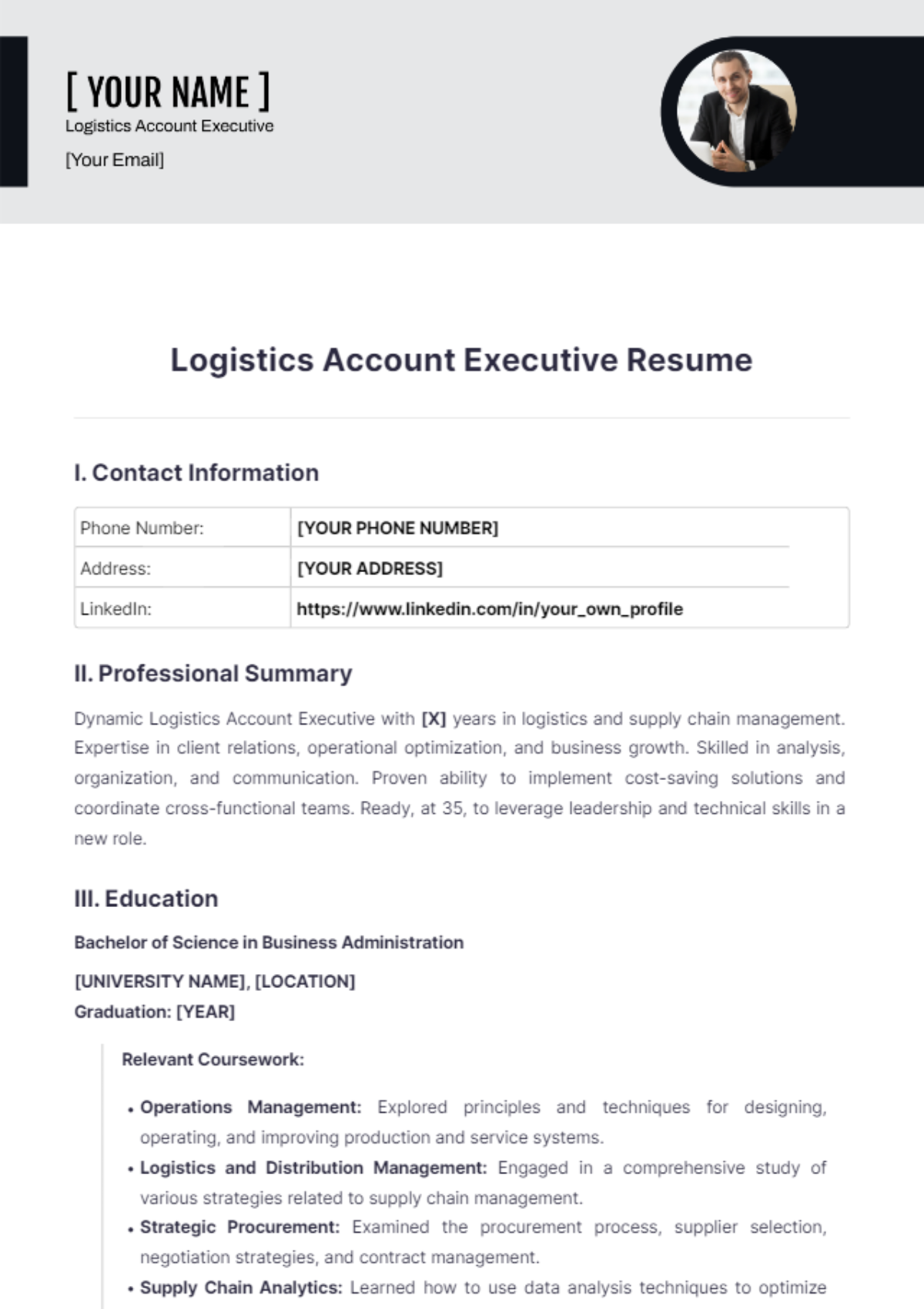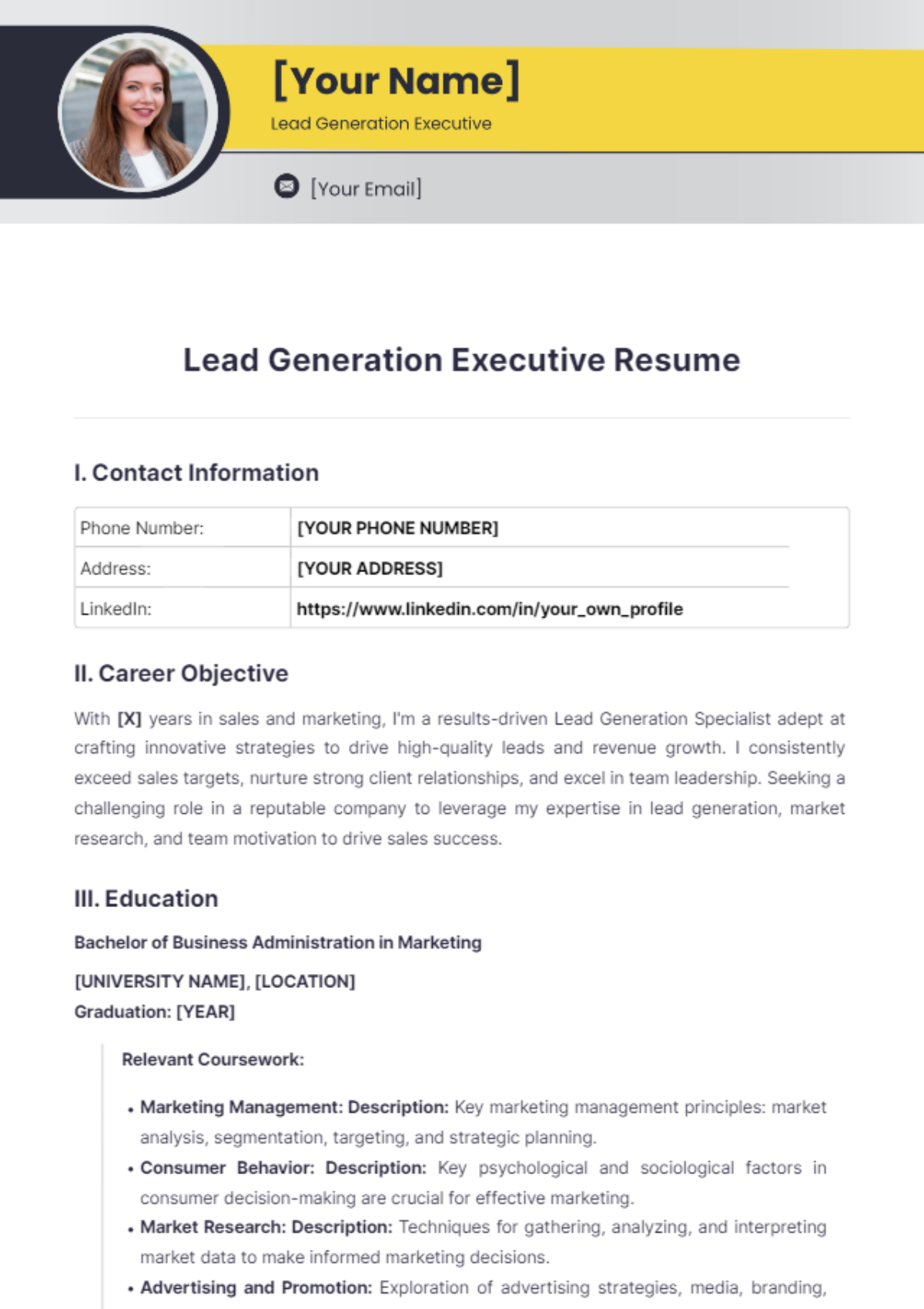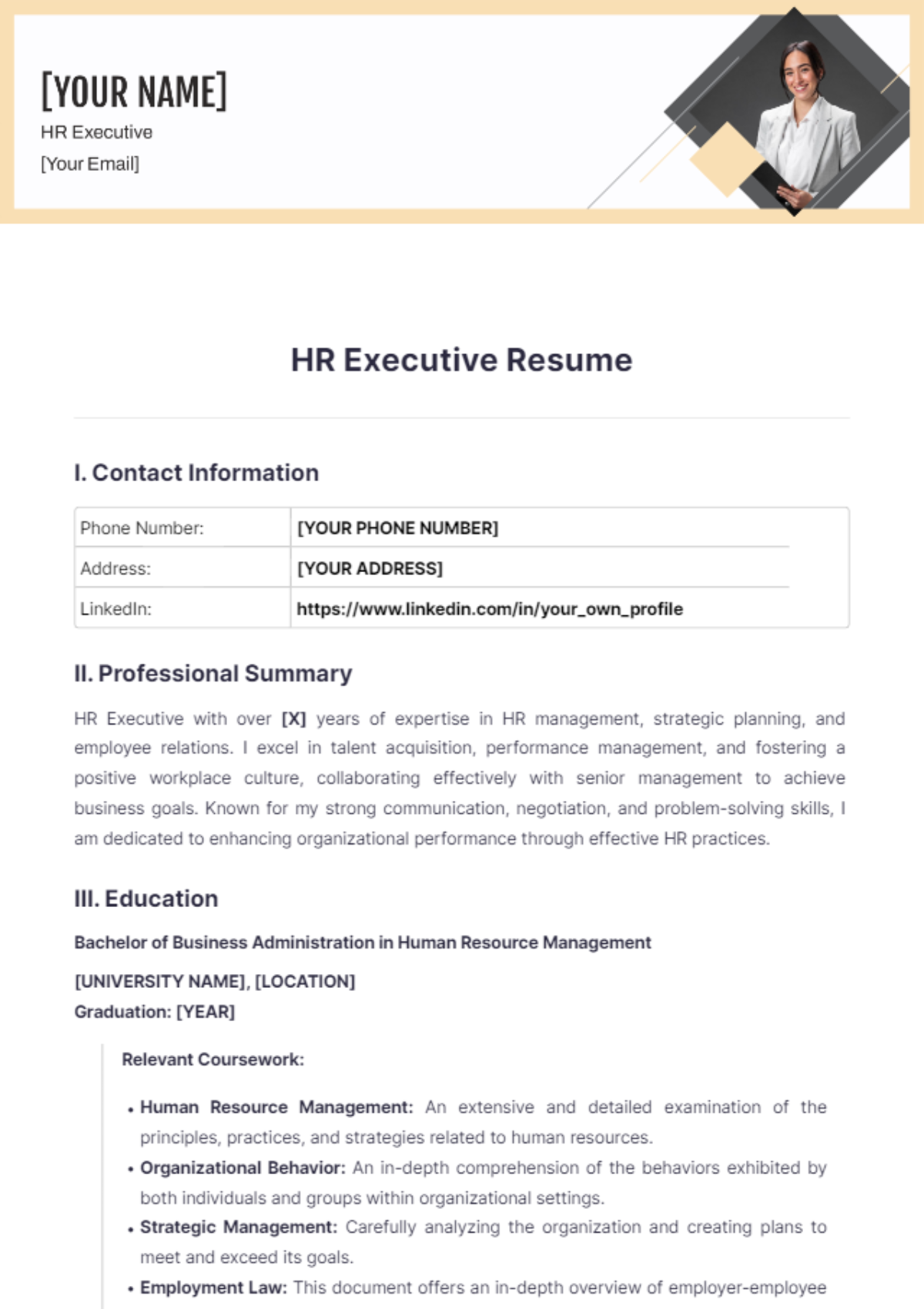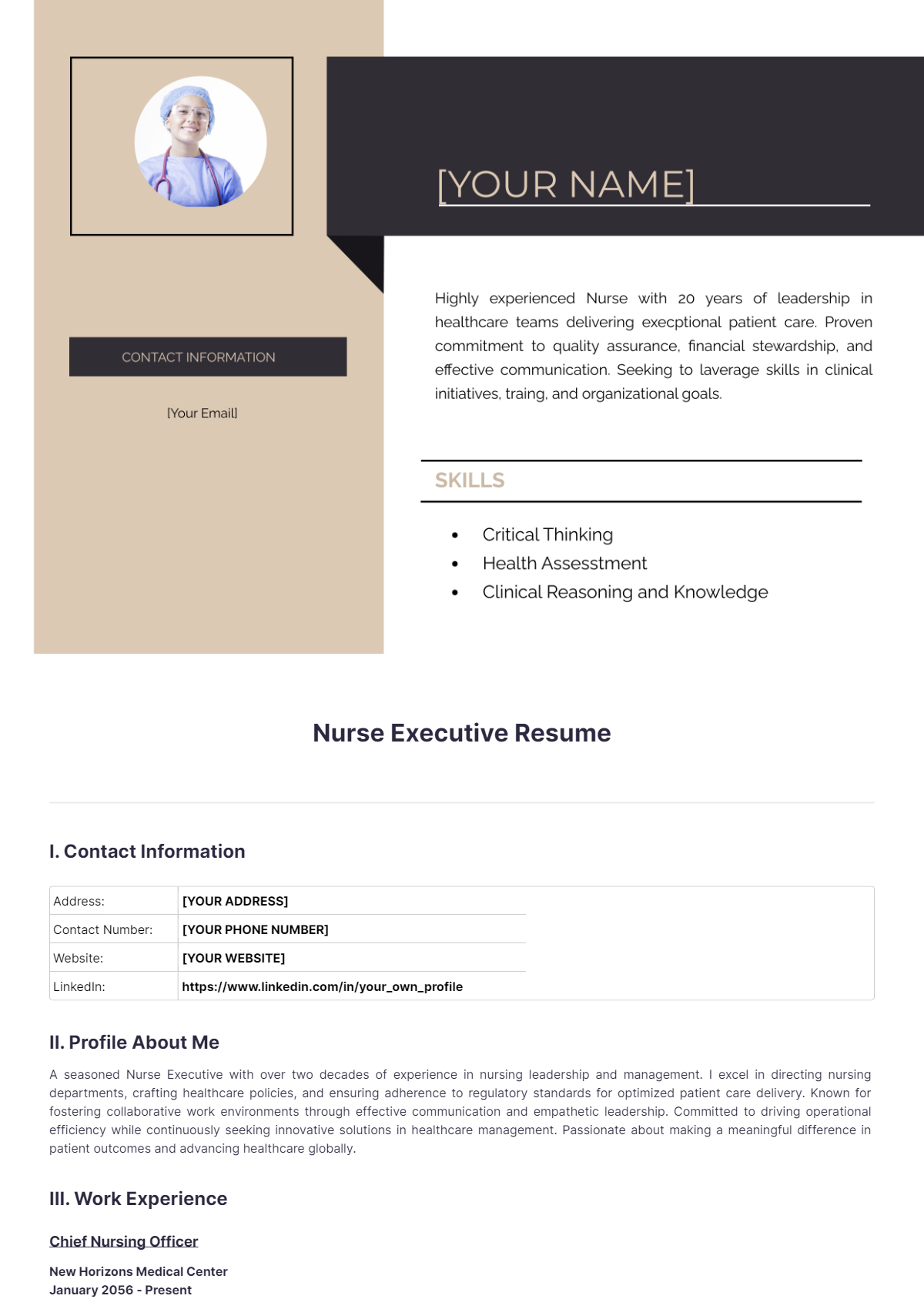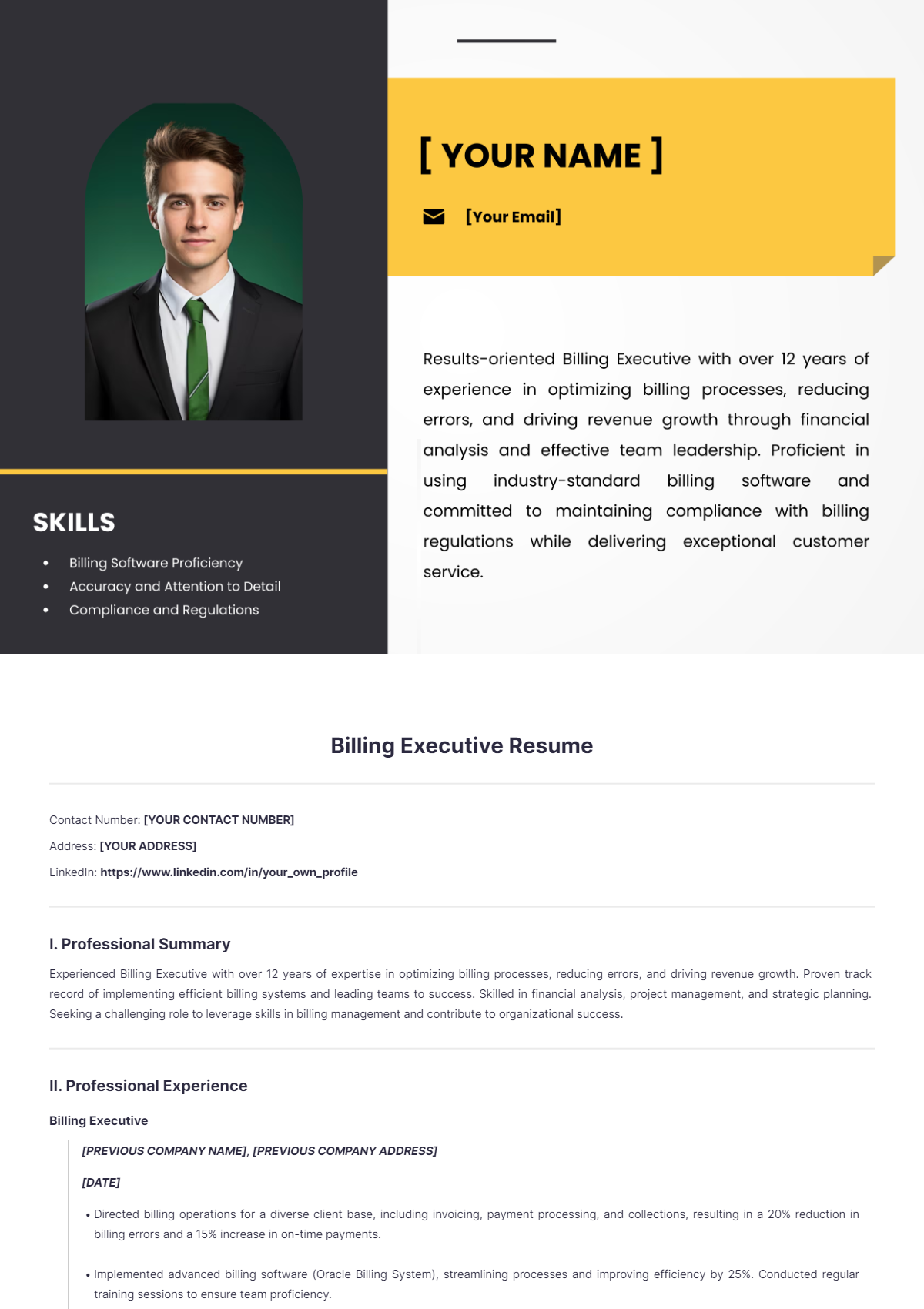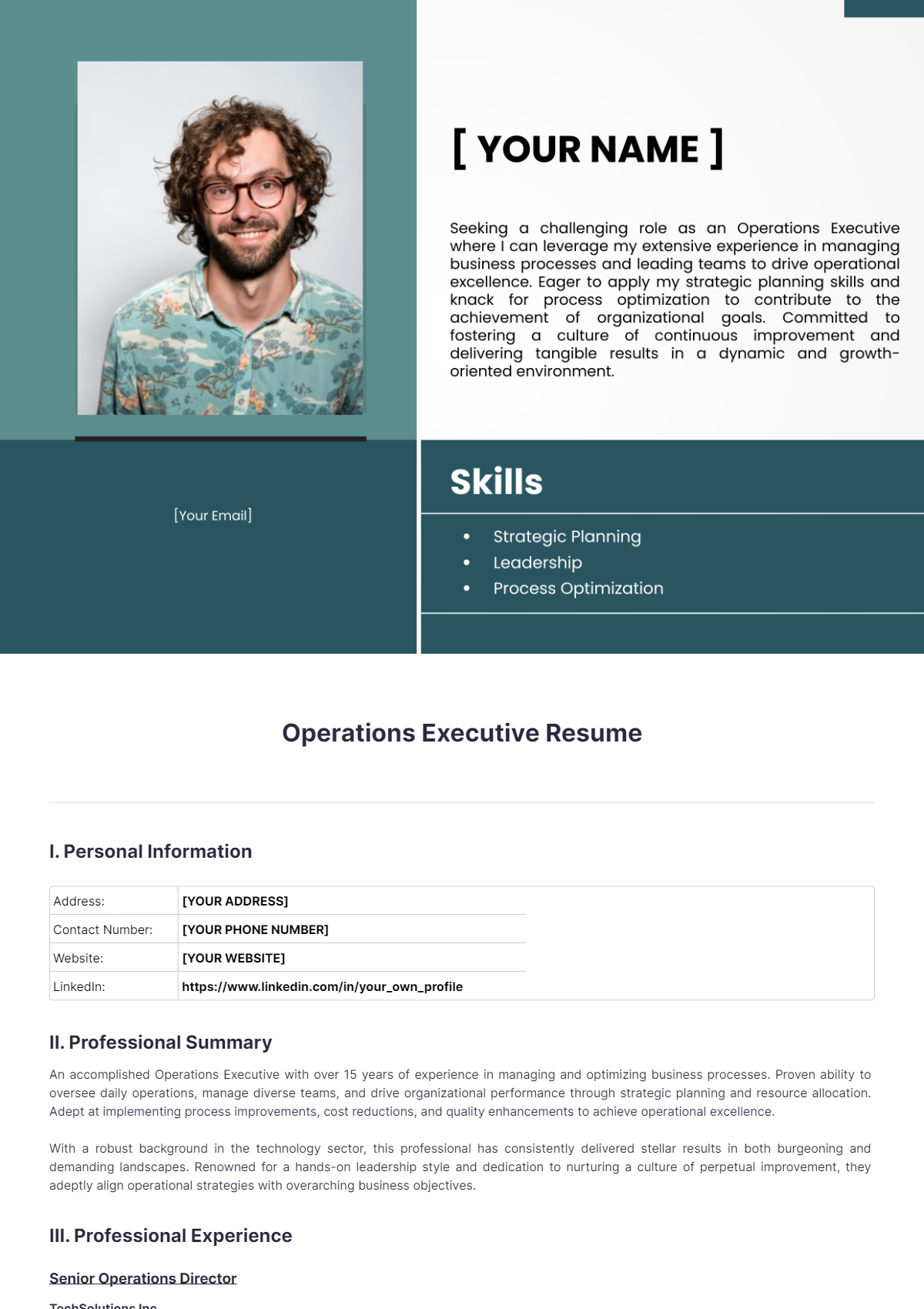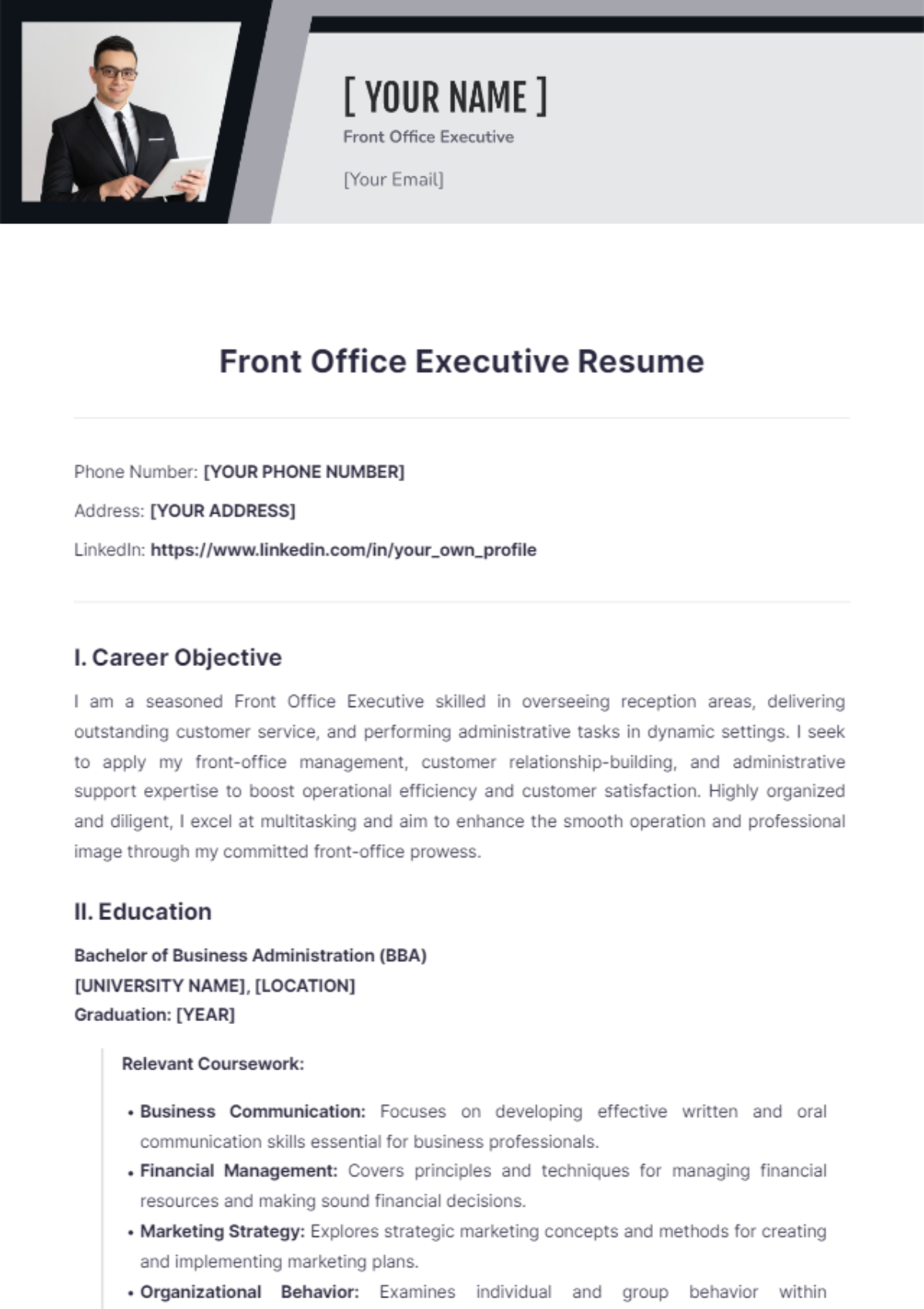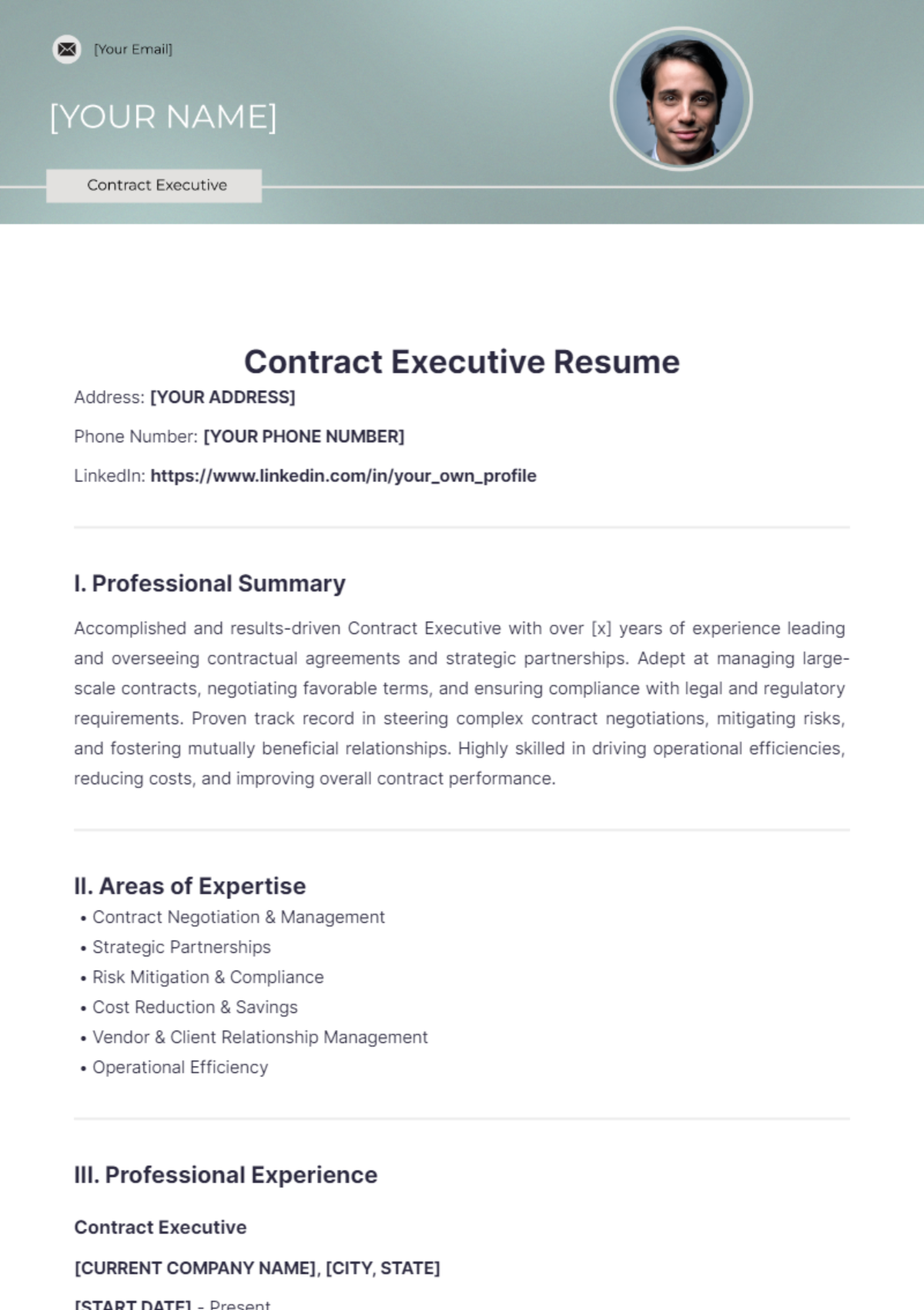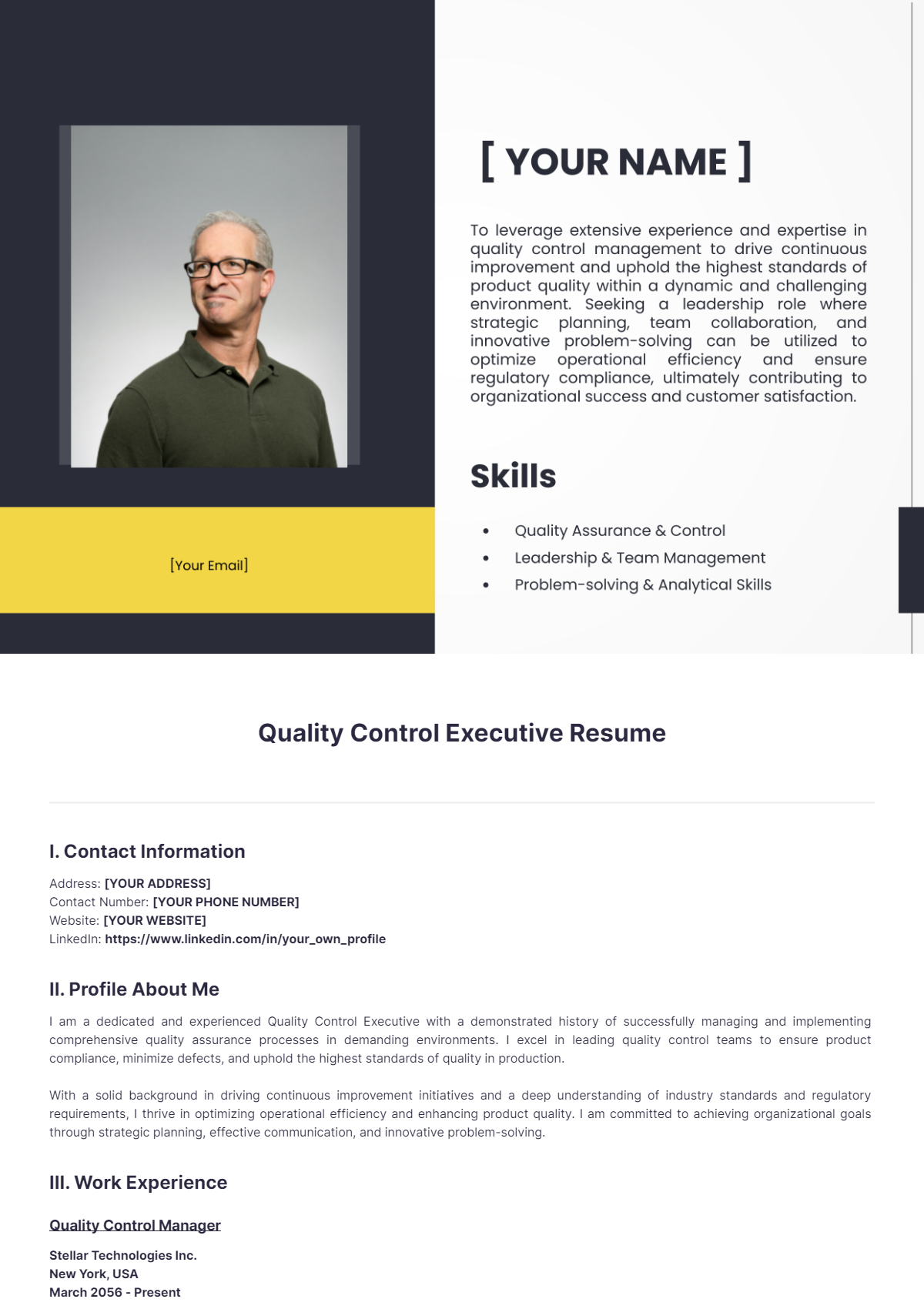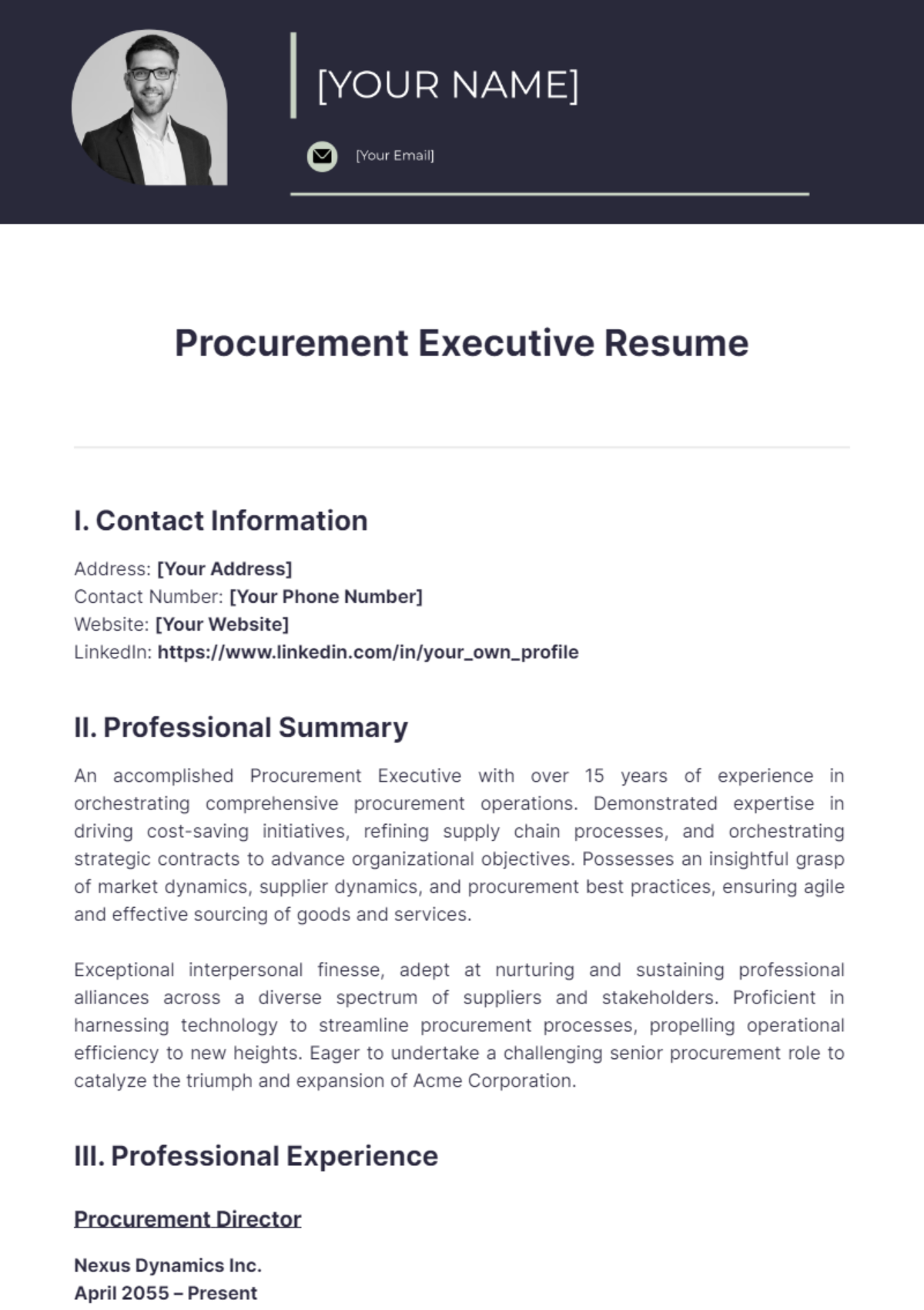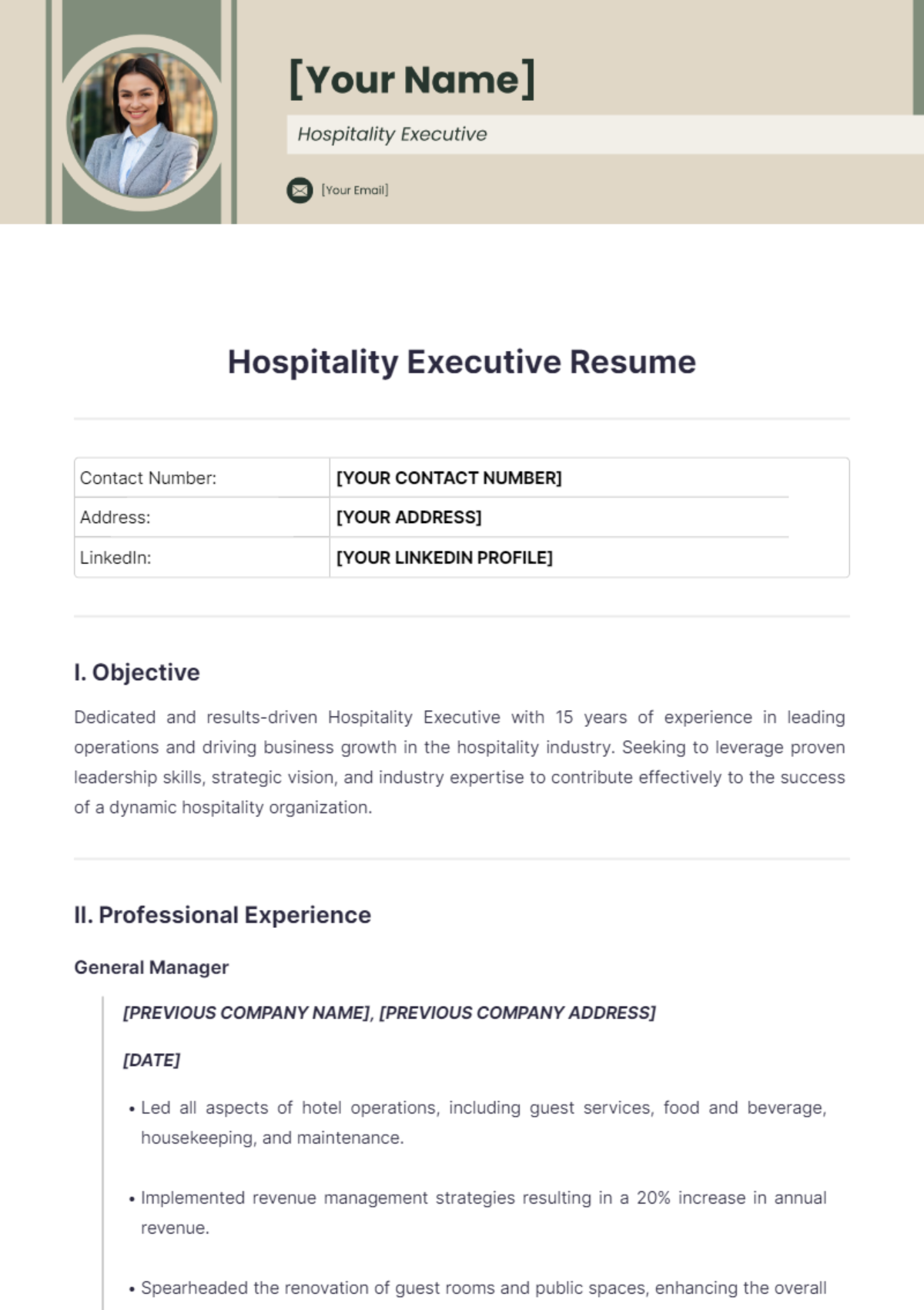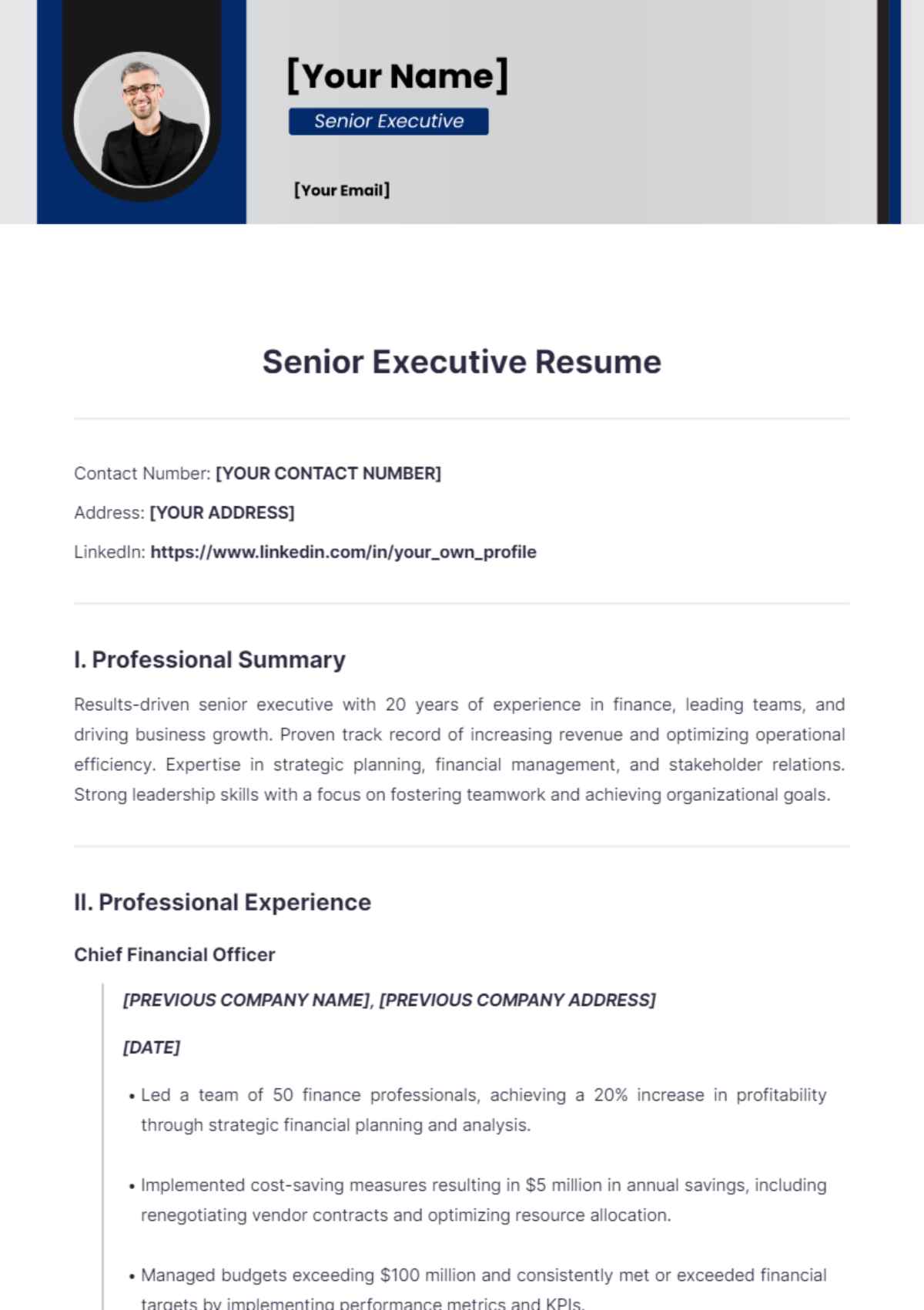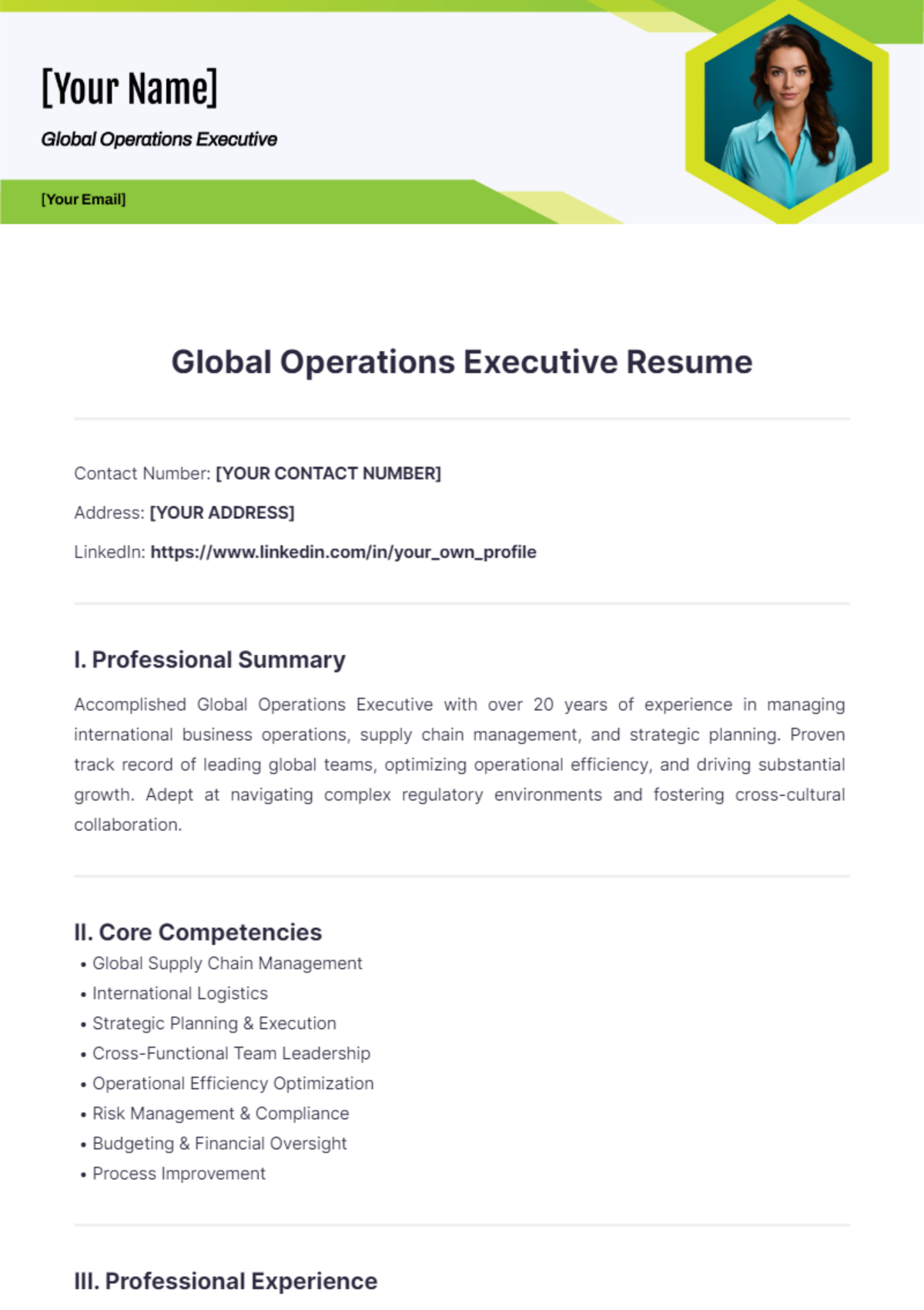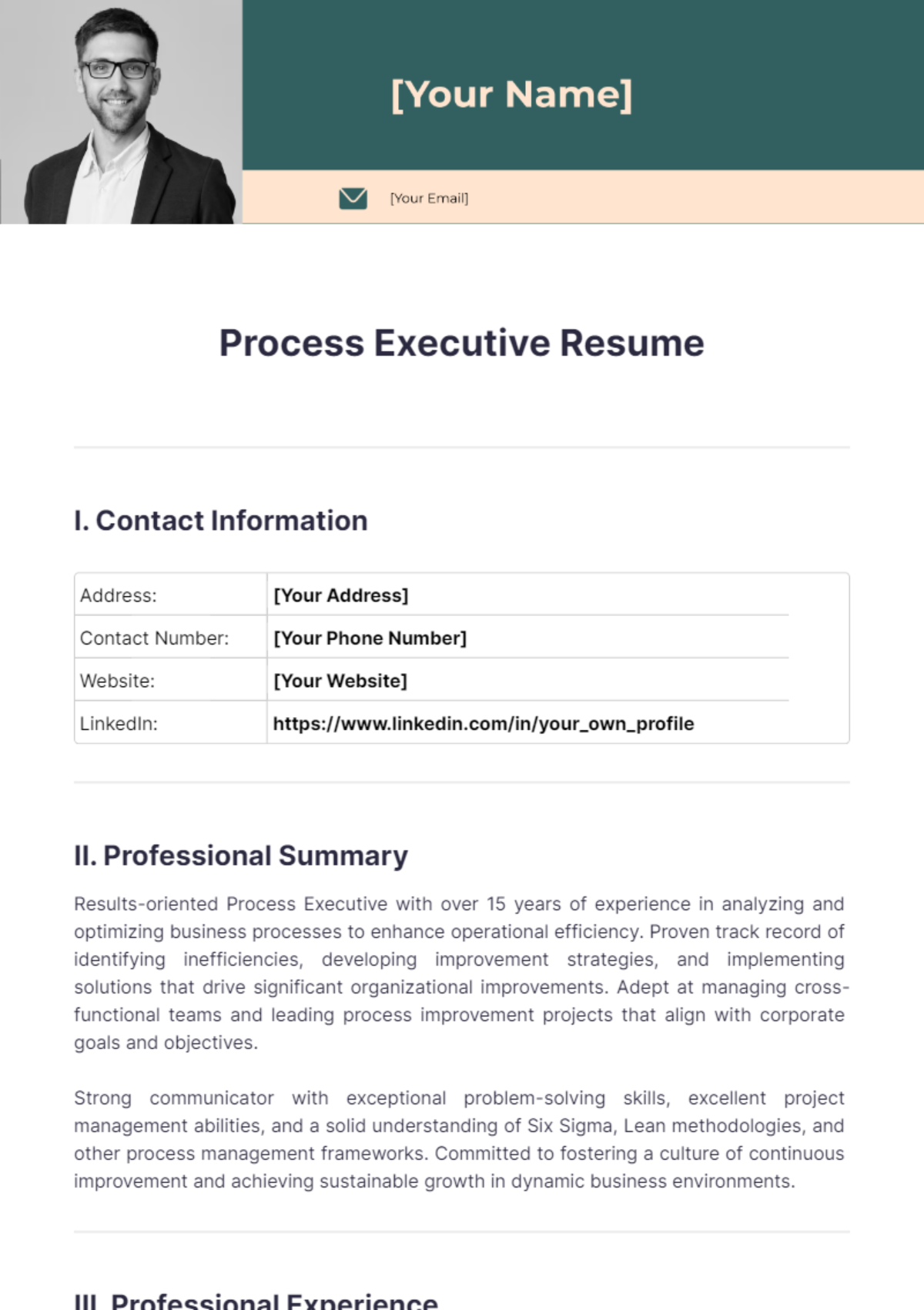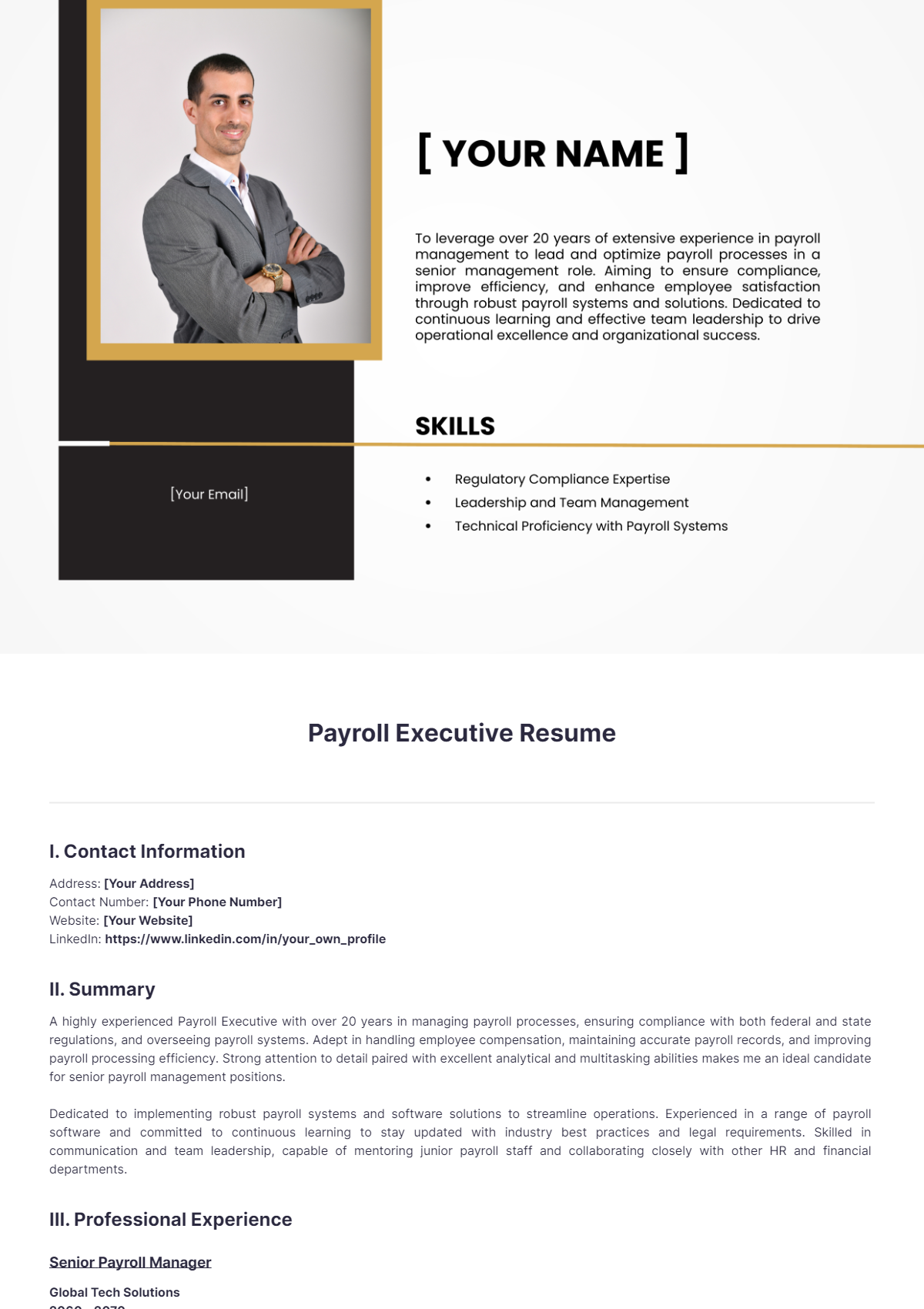Make your Career Aspirations Come to Life with Executive Resume Templates from Template.net
Bring your professional goals to fruition with Executive Resume Templates from Template.net. Perfect for job seekers aspiring to elevate their career to new heights, these templates keep your credentials and achievements engaging, present a polished first impression, and open doors to new opportunities. Use these templates to tailor your resume for a high-stakes job application or to revitalize your personal brand for a networking event. Each template includes structured sections that simplify the process of showcasing your skills, experience, and education, along with space for contact information. With no graphic design expertise required, you’ll enjoy professional-grade designs that are fully customizable to reflect your unique career story, whether you're preparing for a digital submission or a printed handout.
Discover the many resume templates we have on hand to fit every executive's needs. Start by selecting a template that reflects your style and career objectives, then seamlessly swap in your assets and tweak colors and fonts to make it your own. Empower your resume with advanced touches like dragging and dropping icons or graphics, adding animated effects for digital submissions, or utilizing AI-powered text tools to refine your language. The possibilities are endless and require no prior design skills, making the process not only simple but also enjoyable. Our library of templates is regularly updated with the latest design trends to ensure your resume stands out. When you’re finished, download or share it easily via print, email, or export it as a professional PDF file — perfect for reaching recruiters across multiple channels and collaborating in real-time.
